Wildlife Vet Experience – July 2022
Follow the journey of students from the University of Edinburgh, the University of Glasgow, the University of Bristol and the University of Liverpool as they tackle their biggest, most exciting and most daring vet placement to date…the Wildlife Vet Experience 2022 with The Expedition Project and Enza Safari!
Stats

*Week 1 additional stats details: More than 13 reserves were visited, and 8 animal species were worked on (Impala, Buffalo, Nyala, Sable, Kudu, Roan Antelope, Blesbok, Rhino), and a total of 33 animals were worked on. Each student has given an average of 8 intramuscular injections.
*Week 2 additional stats details: 4 projects and 1 reserve were visited, 3 animal species were worked on (Cheetah, Lion and domestic dogs), and a total of 8 other species were monitored (within HESC).
Traditional South African meals tried: Braai vleis, Potjiekos, Malva pudding, Boerewors rolls. Tried local cooldrinks like Mageu, Crème Soda, Granadilla Twist.
Live temperature
Last location
Let’s go!

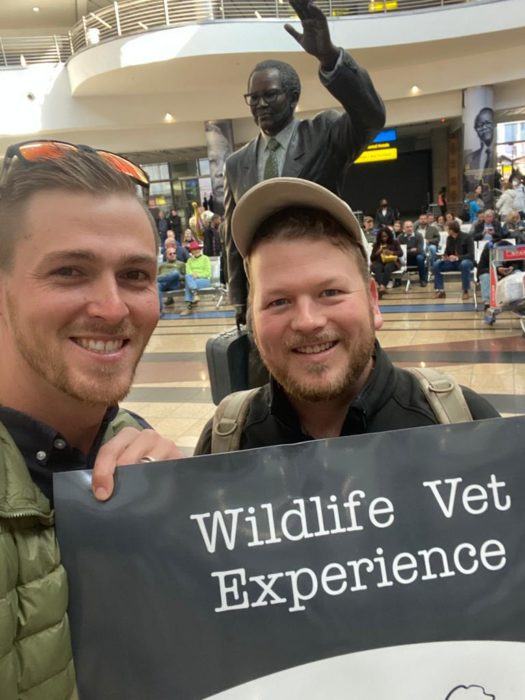
Day 1 (Sunday)
Travel day
After arrival at O.R. Tambo International Airport, Johannesburg, we then drove the 453km journey to Gravelotte, Limpopo for our first week.
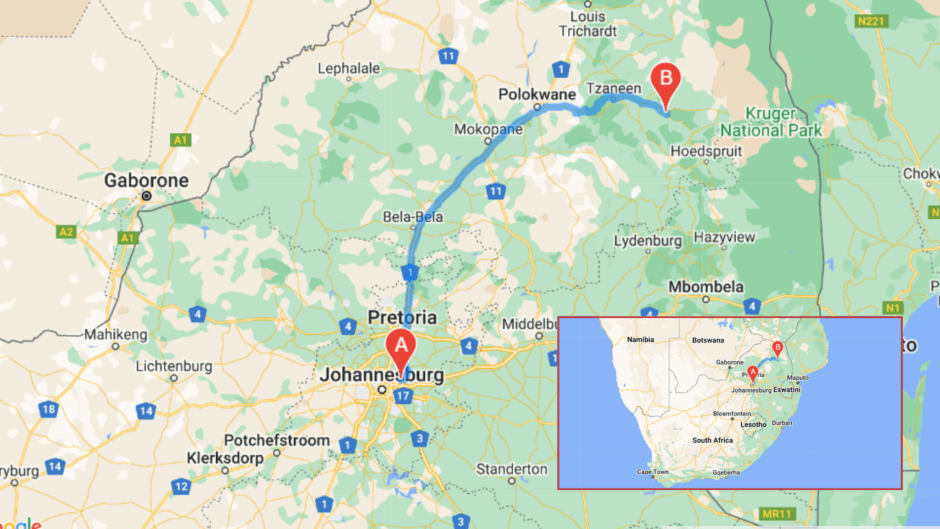
Week 1 Accommodation
Read more about Magwena River Lodge accommodation here.
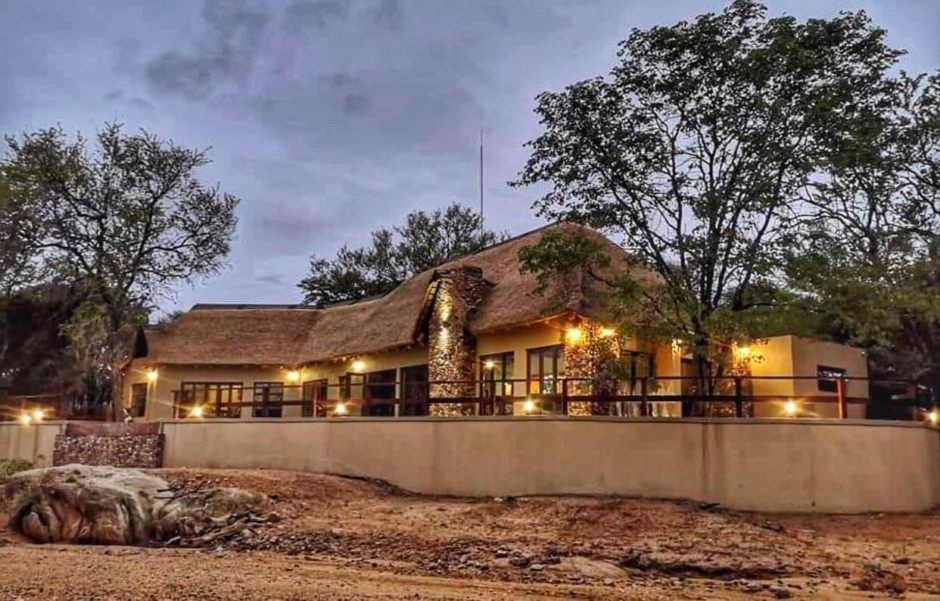
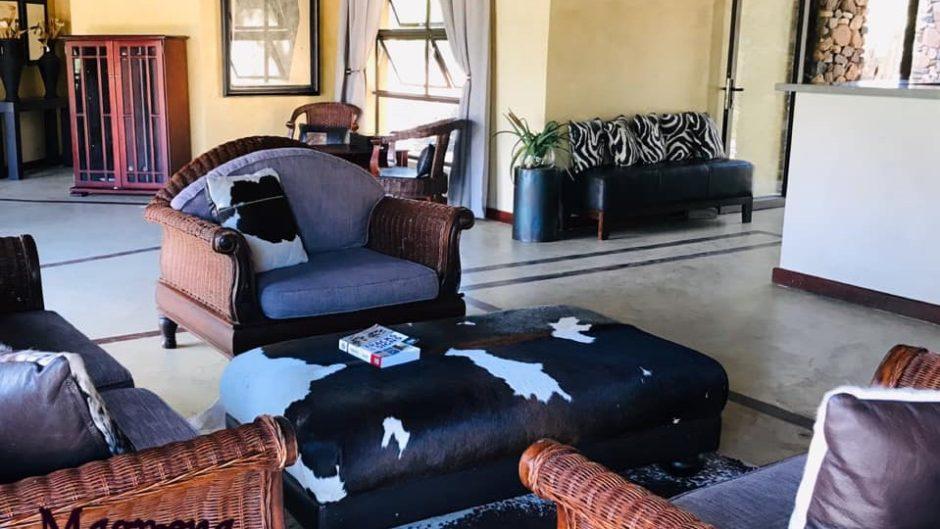
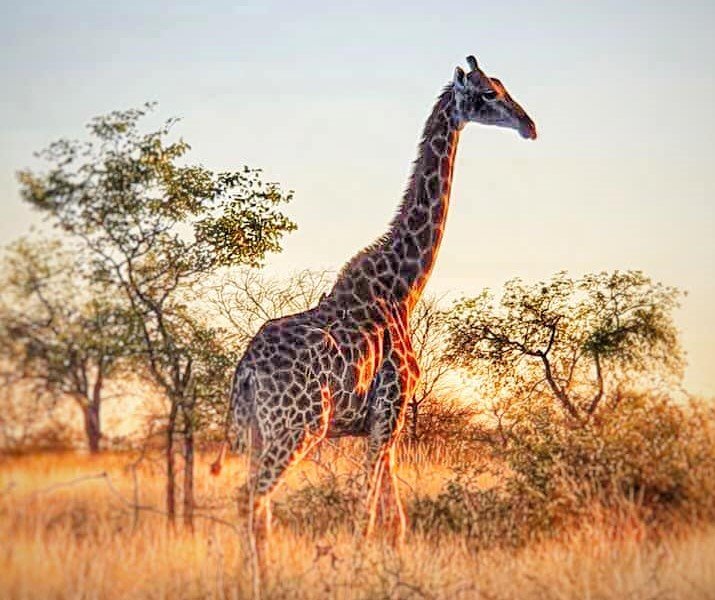
Day 1 concluded with an arrival briefing, a few project gifts, lasagne for dinner, some welcome drinks, and a chat around the fire.
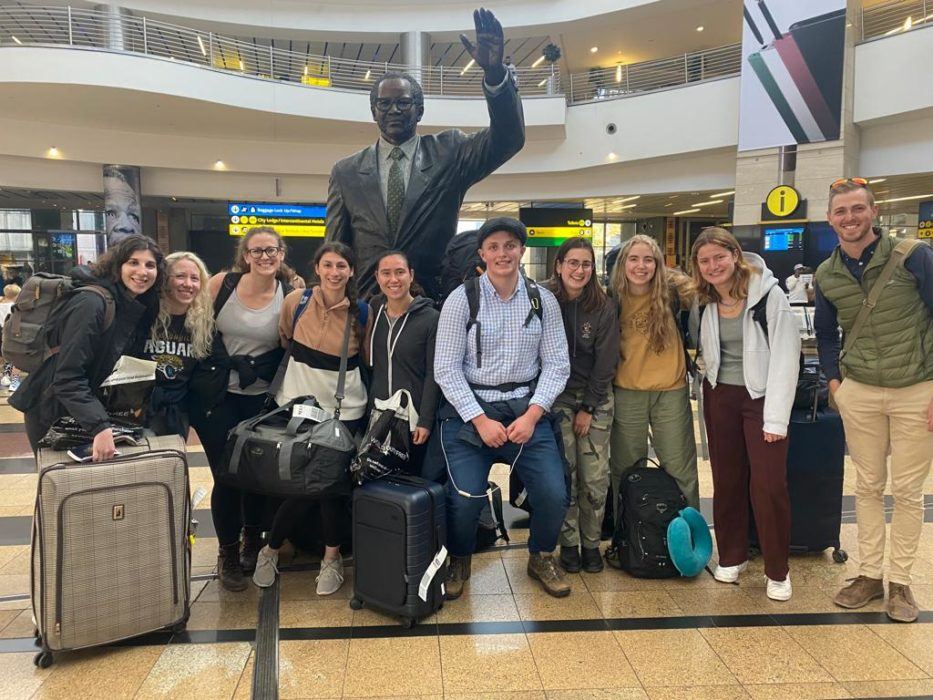
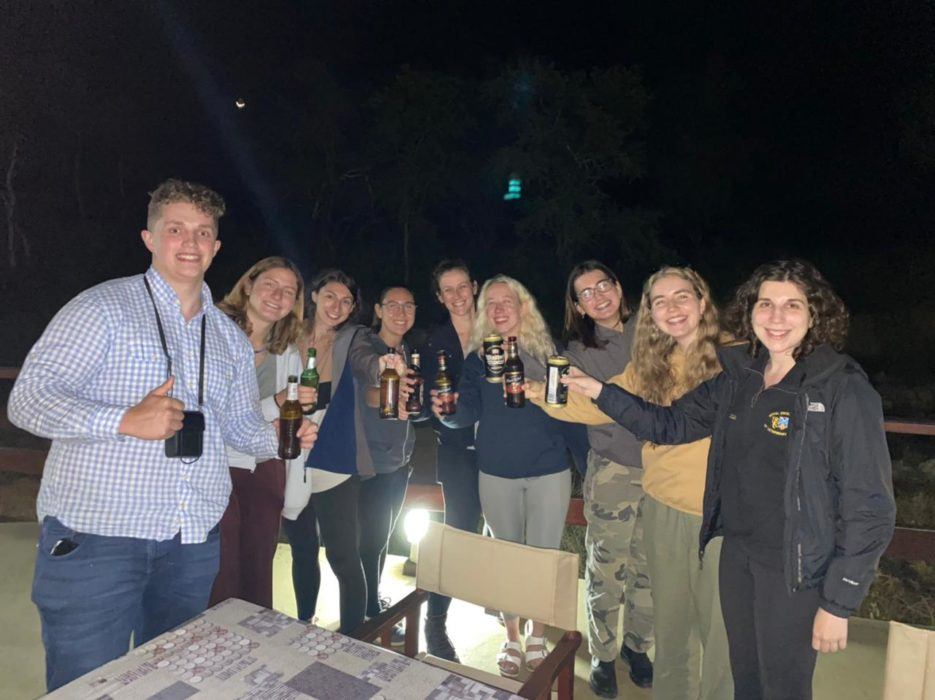
**Highlights:
- Fire pit talk with warnings about buffalo alongside cold refreshments (run if they run!)
- First “load shedding” experience
- Midnight encounter with a pair of giraffes! (a tower of giraffes)
- Very starry night upon arrival
Day 2 AM (Monday)
Orientation
Day 2 started with breakfast and then a guided bush walk. Very informative and interesting for the team. Lots to learn about the environment we are in and the animals that inhabit it.
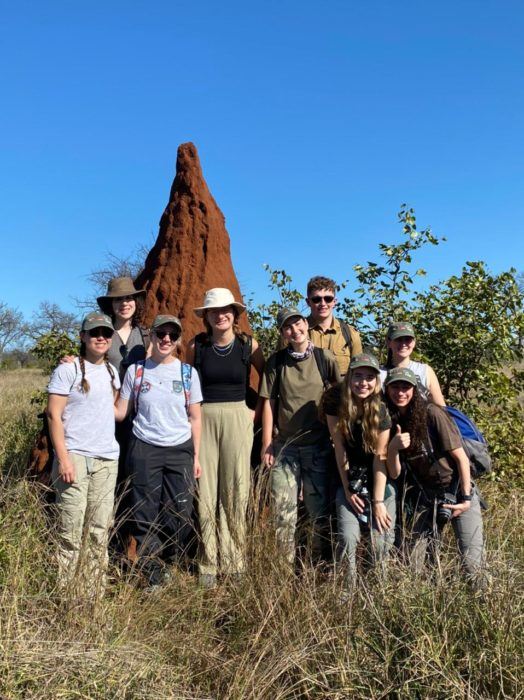
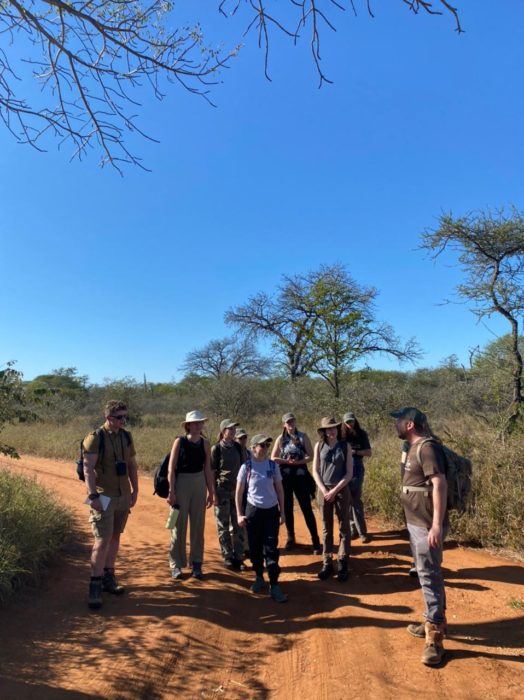
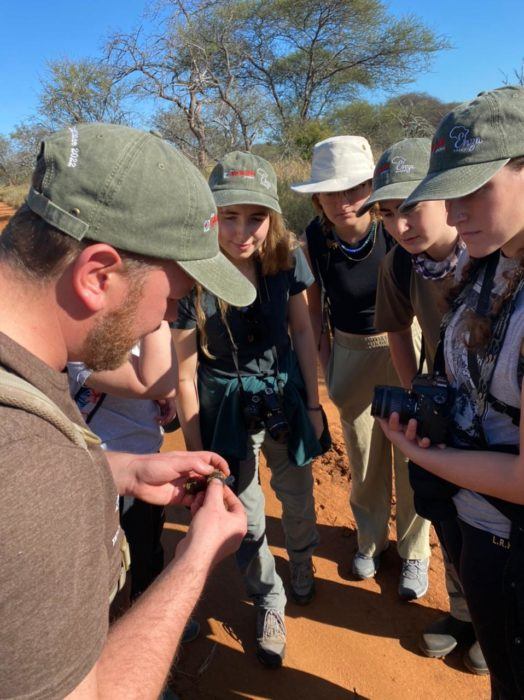

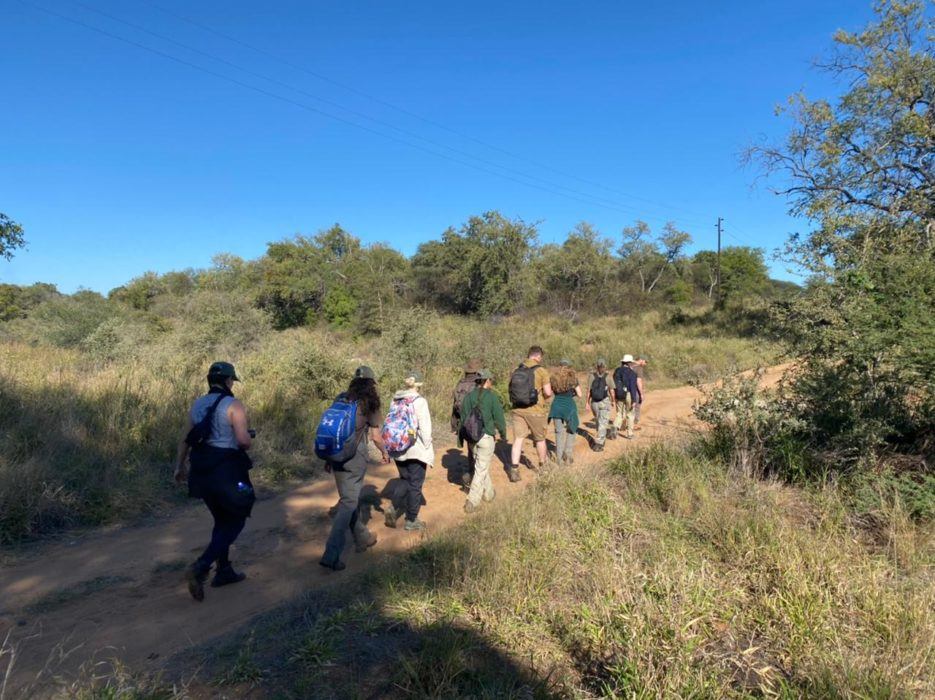
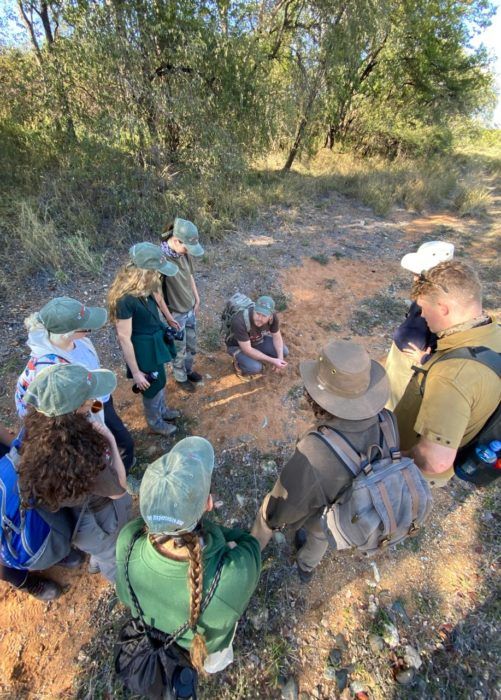
**Highlights:
- First group breakfast with a late start
- Guided walk with Rico down the dried riverbed, talking about tracking (wildebeest, giraffe, kudu, civet, hyena), termite mounds, leadwood trees (with folklore), Mopani trees, and buffalo thorn (and the reason behind their names)
- Quick lunch, thanks to the lovely Simon
Day 2 PM (Monday)
Vet shadowing with Dr Boshoff
An afternoon working with Impala and Buffalo.
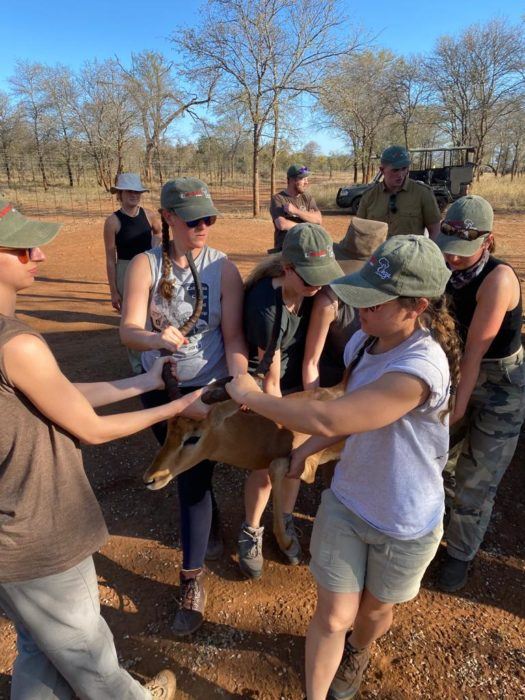
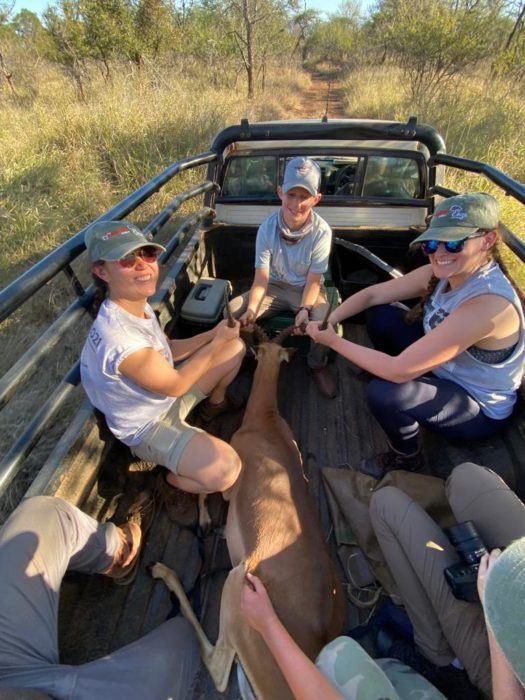
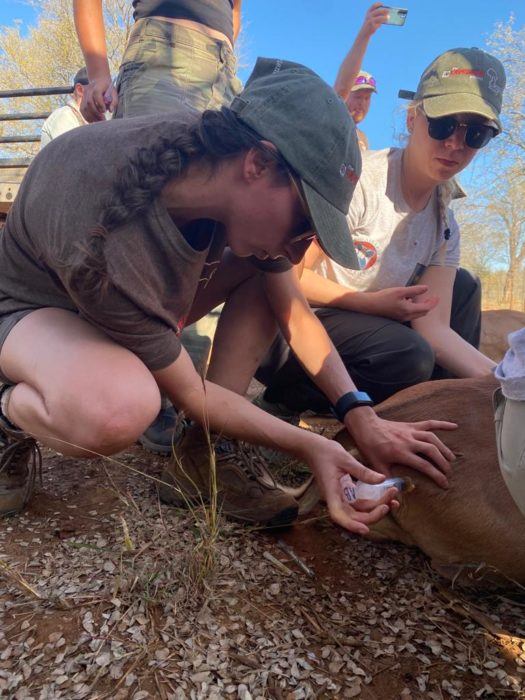
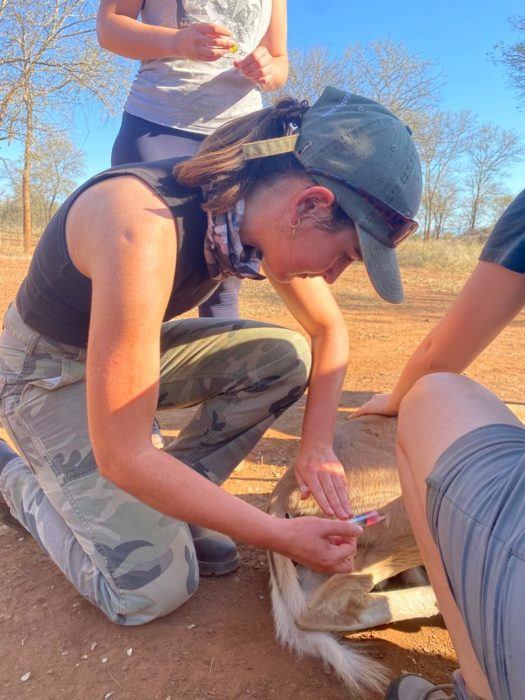
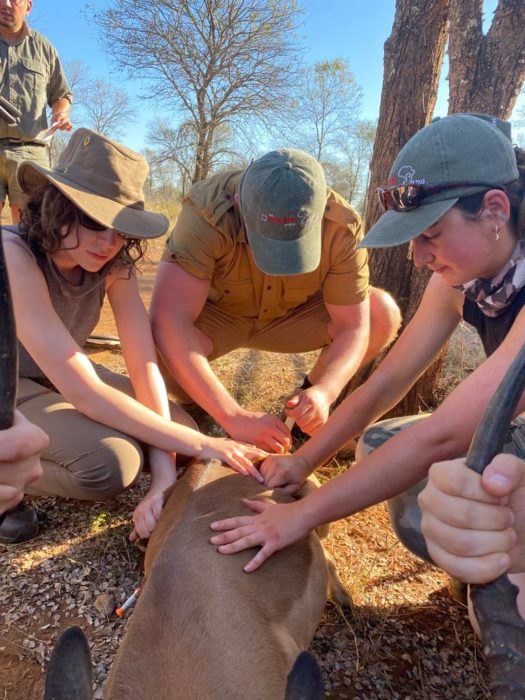
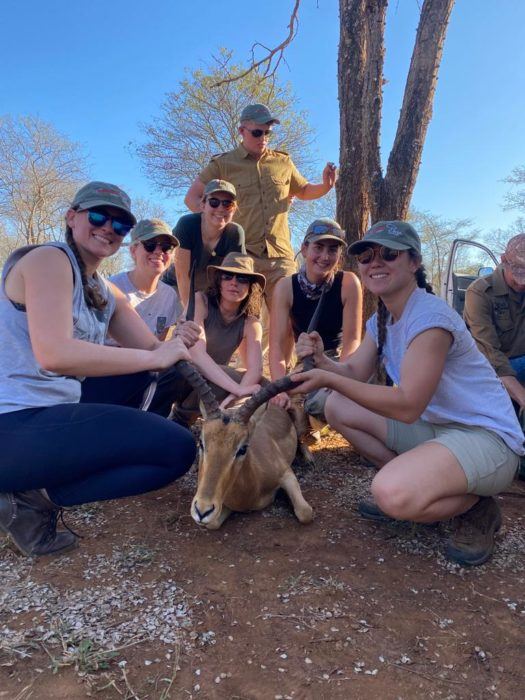
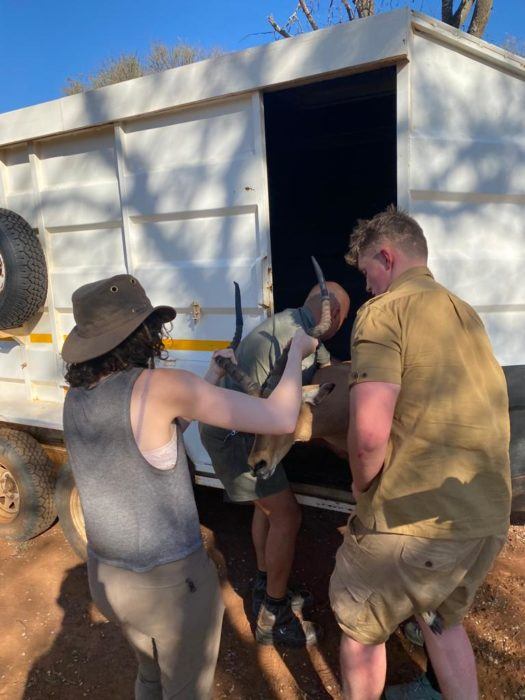
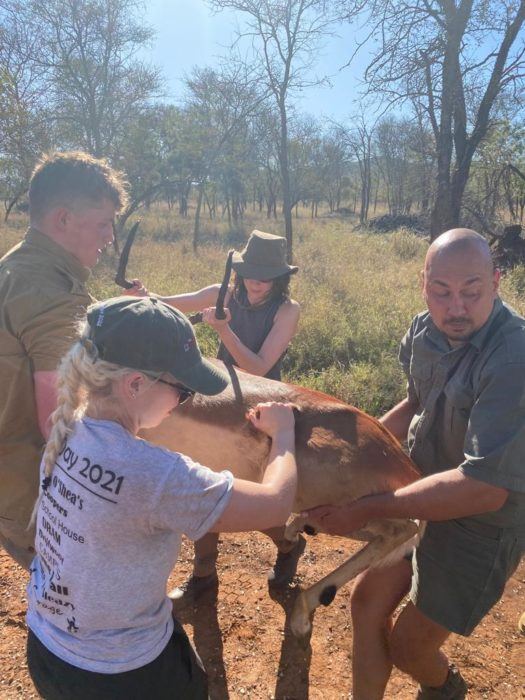
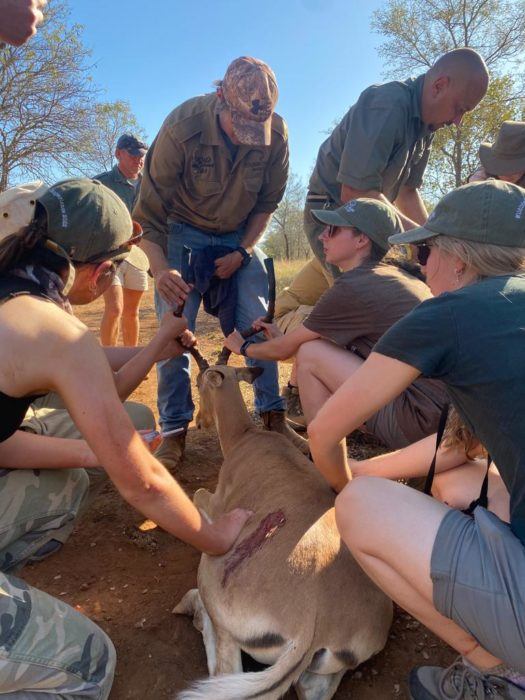
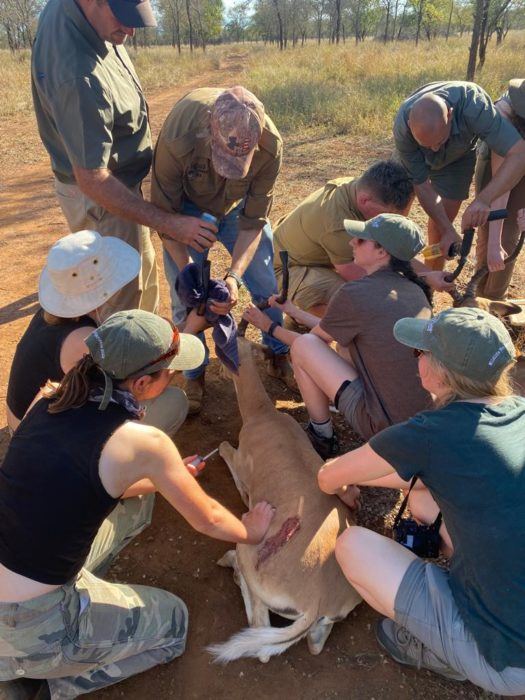
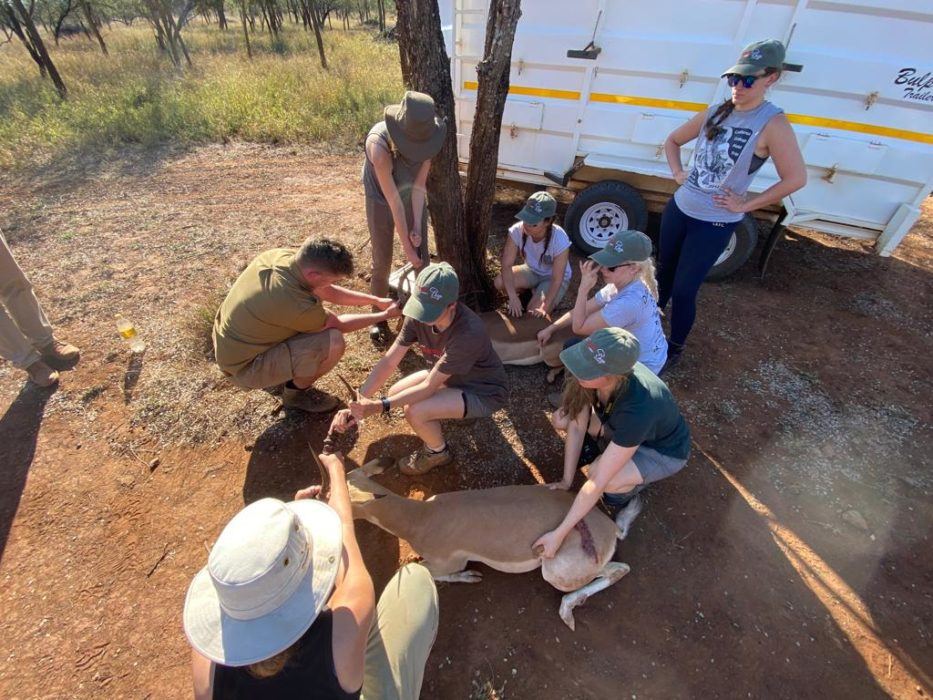
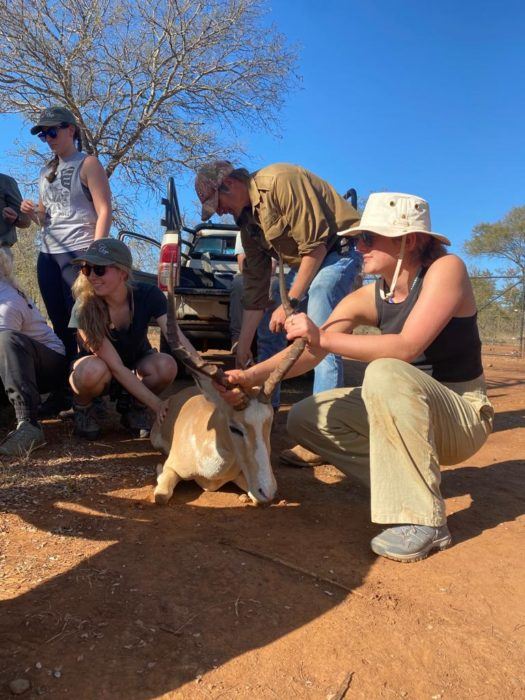
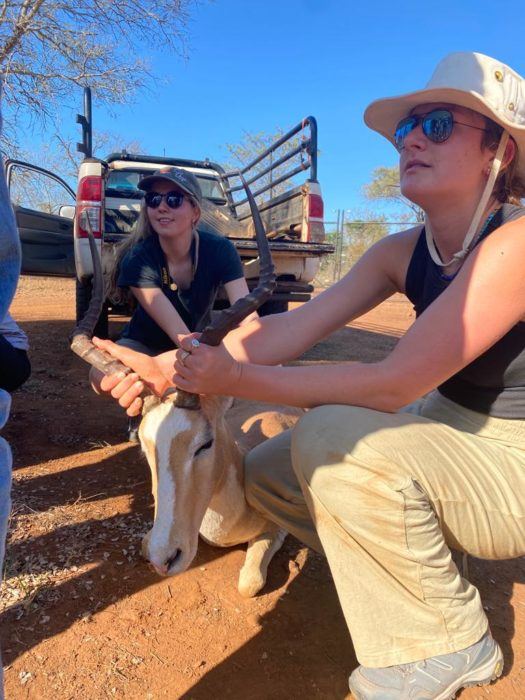
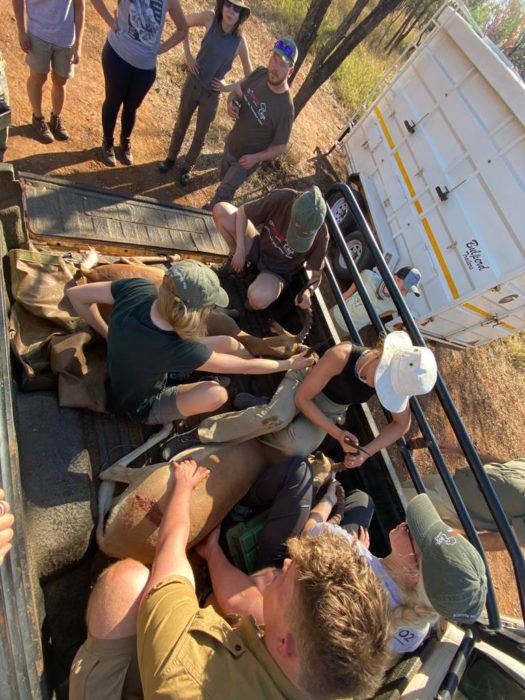
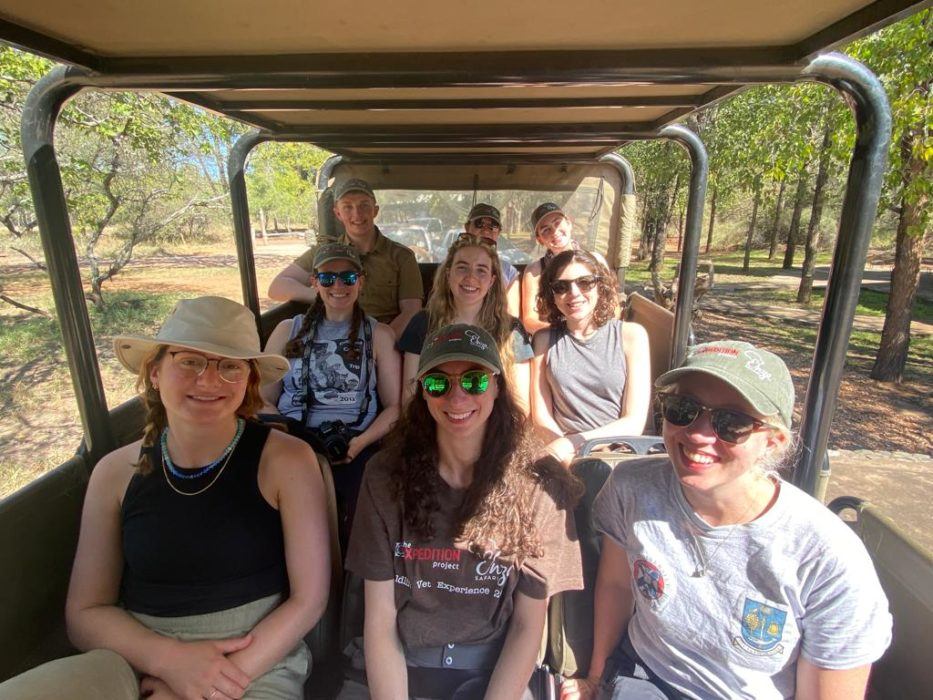
**Highlights:
- The first encounter with the 11-person safari vehicle open to the elements– hold onto your caps, keep all hands and feet inside the vehicle
- The first meeting with Dr Bossie was all business at our first Game Reserve
- We also met Gerry, the famous local helicopter pilot
- Gerry and Bossie were off to dart the white-flanked impala first, followed by a common impala. Half followed on an open-backed keep, looking out for the sedated animals
- We captured them and transported them back to the trailer
- Measuring horns to assess the age and reproductive potential. IM injections were given of a broad-spectrum antibiotic, Vitamins, and wormers to switch off with the second group, who captured a Common Impala
- They were transported away, as we went to knock down an escapee buffalo at another game reserve, where they breed Cape Buffalo, Roan Antelope, and sable
- He was followed with the feed truck, a team of people transported him into the trailer, and he was transported to an enclosure on the ranch
- Drive back was beautiful with the spotting of giraffes and other wildlife (aardvark, kudu, sable, warthog, female nyala, etc.) in the sunset–talk about tall, dark, and handsome giraffe (more testosterone)
- We all returned to the car with a “spray tan” and proceeded to cover up as the temperatures dropped
- Dinner was amazing with a new version of garlic bread, and a familiar dessert of sticky toffee pudding
- After dinner, we went and sat around the fire to talk about a jam-packed day and plan tomorrow’s adventures
Day 3 (Tuesday)
Vet shadowing with Dr Boshoff
A day working on 3 reserves and covering 180km. We worked on 3 species – nyala, sable and kudu. Animals were darted and translocated, or data collection is taken.
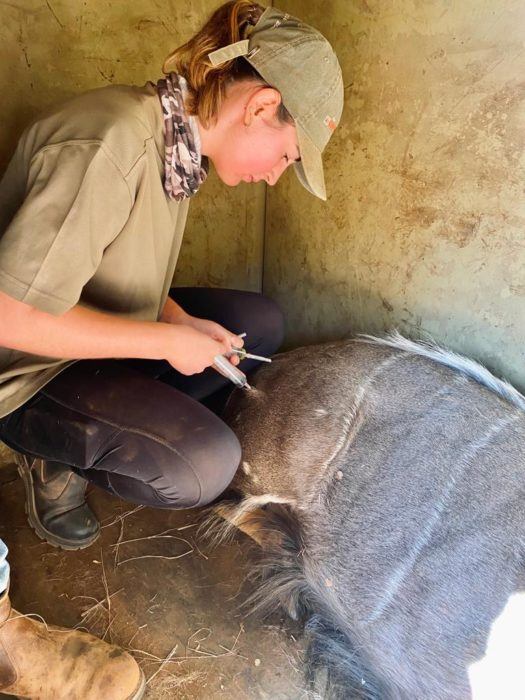
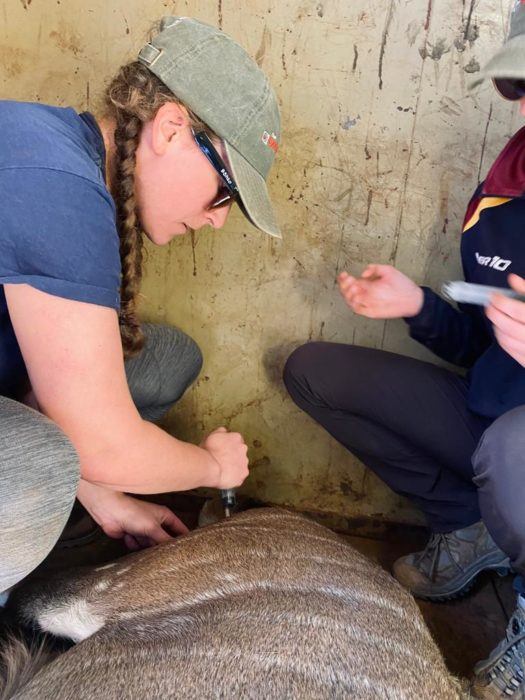
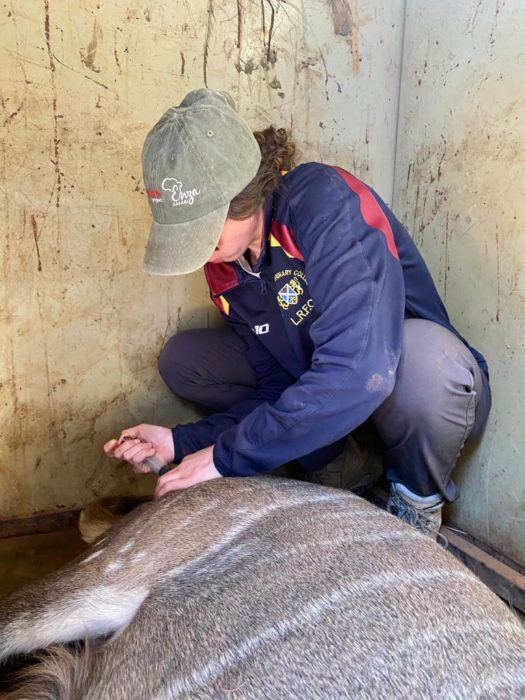
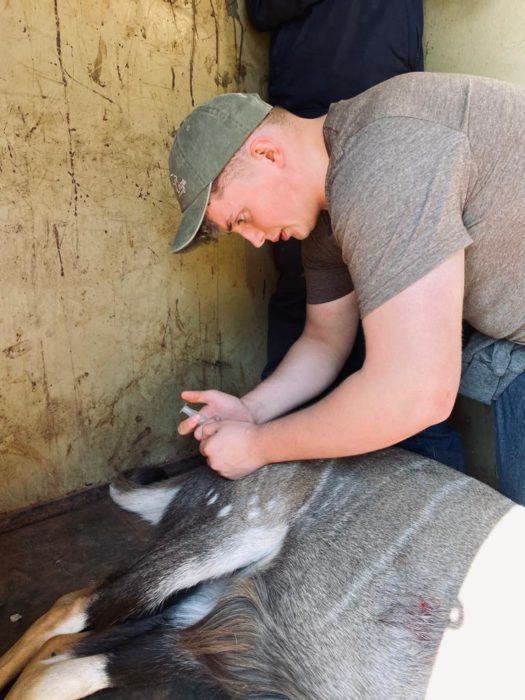
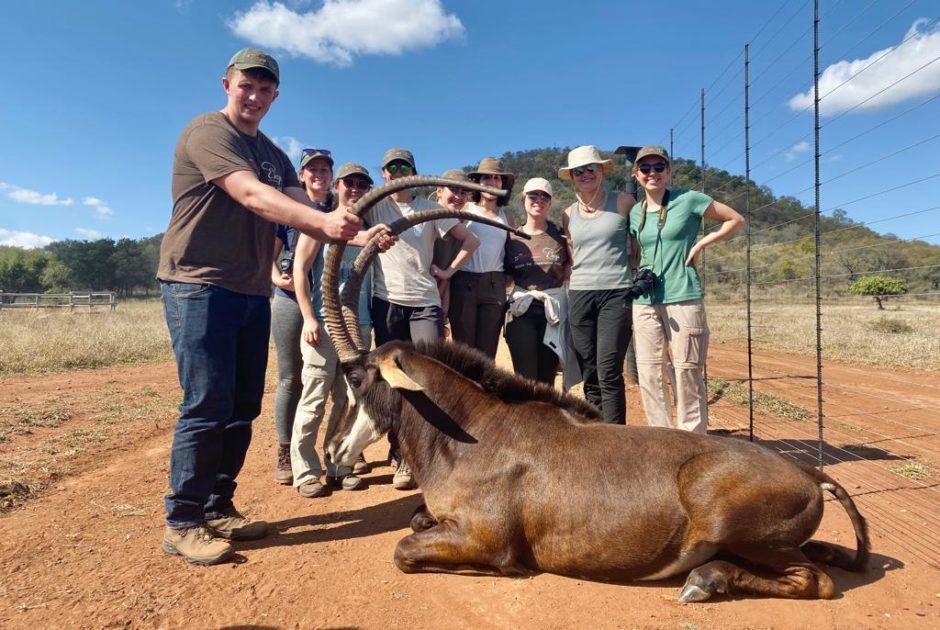
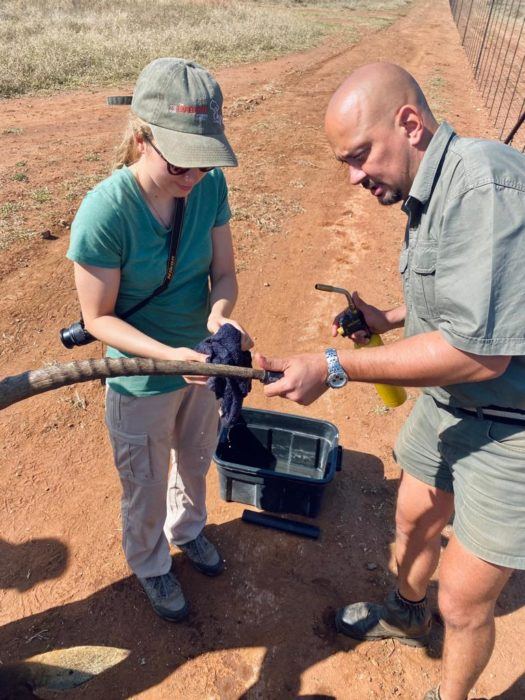
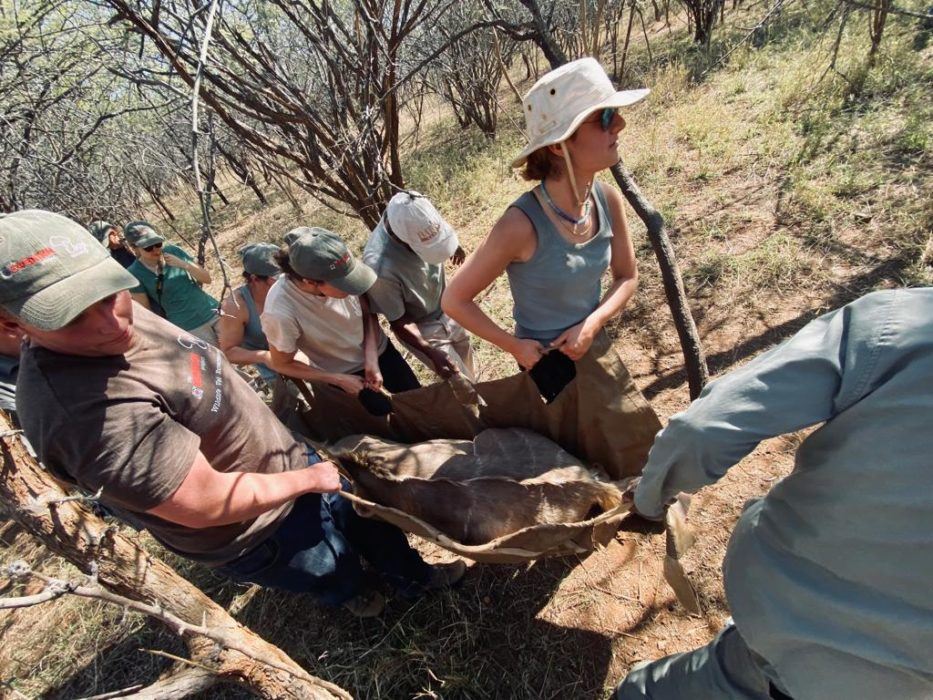
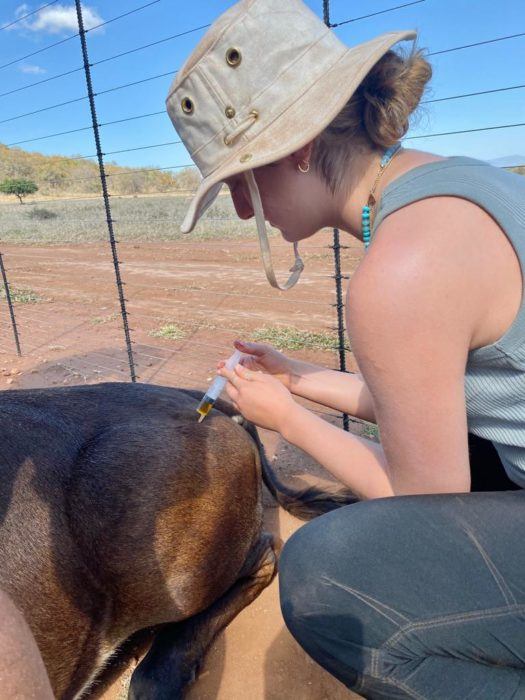
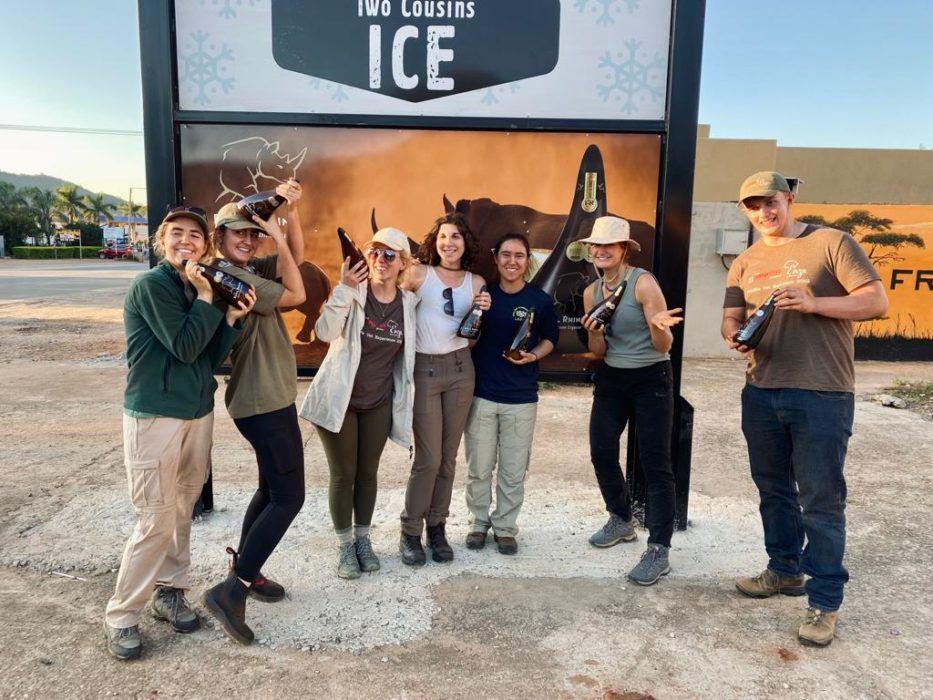
**Highlights:
- With an early start, we woke up to see a herd of buffalo and then had a hearty breakfast courtesy of some scrambled eggs and bread due to a “load shedding” preventing us from having electricity to power the toasters.
- During the day, we went to three different reserves working firstly with five male nyalas with one prime male bull and four juveniles. We went out in student teams of three plus Dr Bossie and guides in the jeep, observed the darting, loaded them with a tarp onto the jeep and brought them back to base. Then we injected them with a dewormer (doramectin), vitamins (B and E) and a broad spec antibiotic (oxytetracycline). Once we had done this with the five male nyalas we went on to search for a skittery male kudu to which we were unsuccessful almost losing.
- Secondly, we went to work with a prime sable bull worth around R250,000 (ZAR) which Dr Bossie darted successfully and then took control of the horns and completed the routine treatment which consisted of:
- Placing PVC plastic over the tips of the horns and moulding it onto the tip with a blowtorch as there was evidence of the horns being damaged thought to be due to the presence of another male sable next door inciting the sable to butt of the fence causing a loss of roughly 1 inch of horn which determines the value of the animal.
- Injecting the sable with a dewormer, antibiotic and vitamins plus some additional Co and Mg which aid with the absorption of copper which is required as the sable, which was naturally black was starting to turn brown
- Checked for ticks and applied a pour-on to prevent any further infestation
- Measured the length of the horns which determines the age and value of the animal (assuming no damage and loss of the horns has occurred)
- Then Dr Bossie administered the reversal combination in the marginal ear vein.
- Thirdly we looked for a juvenile kudu which had to be moved from one section of the reserve to an area that was more suitable, the procedures performed on the kudu included:
- Microchipping
- DNA testing
- Checked for tick burdens around the genitalia
- During the transport of the kudu, we noticed while on board that under the sedative there was significant respiratory depression (no noticeable breaths). We then alerted Dr Bossie who made the decision to stop the transfer, take the Kudu off the vehicle and administered the reversal to ensure that the kudu was breathing.
- Finally, we went to the final reserve of the day and traversed the bush to look for a prime kudu bull which was being sold. However, due to the skittery and shy nature of kudu, this was a difficult task and the combined efforts of the team lead to no avail as we darted two kudu bulls who were not the individual they were looking for when compared to the stud photos available.
- Tonight we eat a traditional favourite of beef potjie (South African pot stew) and rice.
Day 4 (Wednesday)
Vet shadowing with Dr Boshoff
We woke up for breakfast in the dark. Driving 269km, today we worked on 4 species – a Roan Antelope calf, multiple Sable, treated a broken Blesbok leg with a cast, translocated Nyala bulls and ended the day with a drink at the local restaurant. A full day!
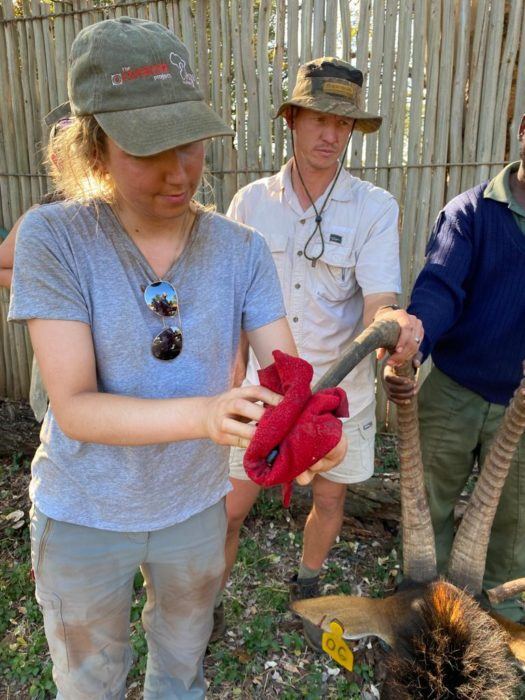
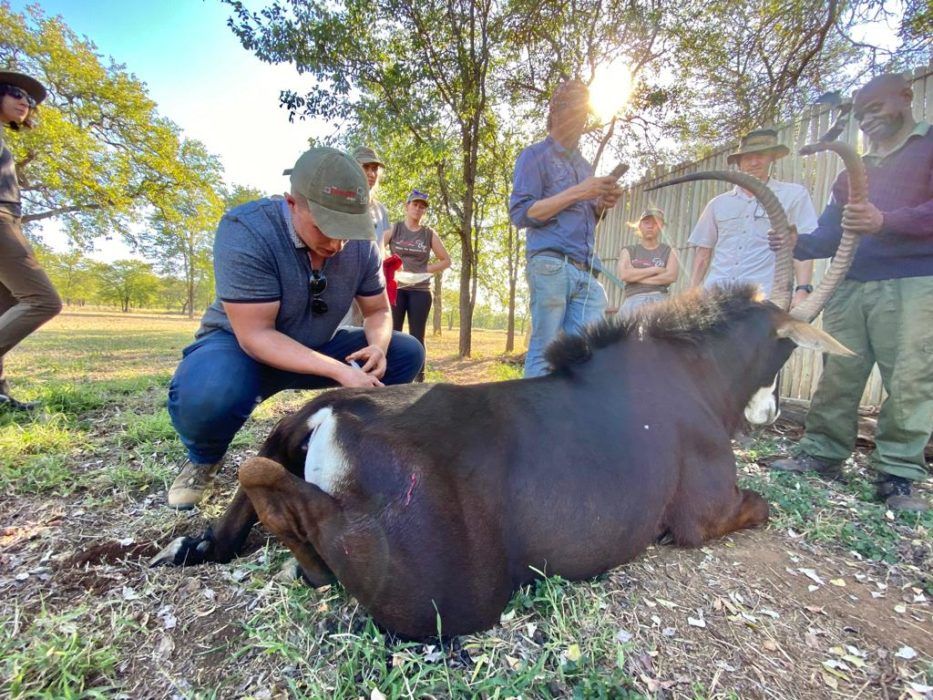
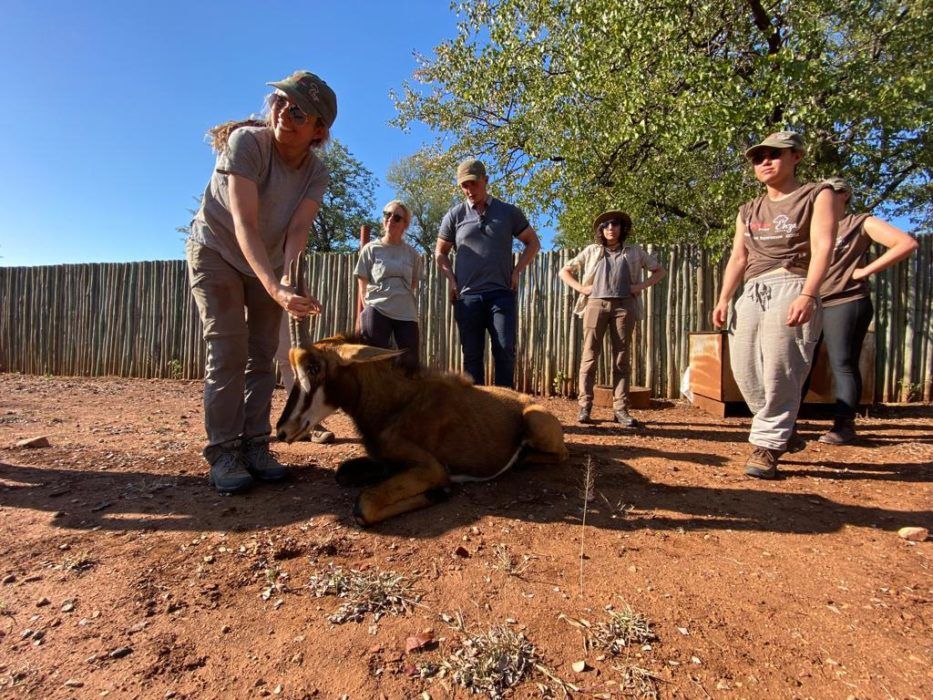
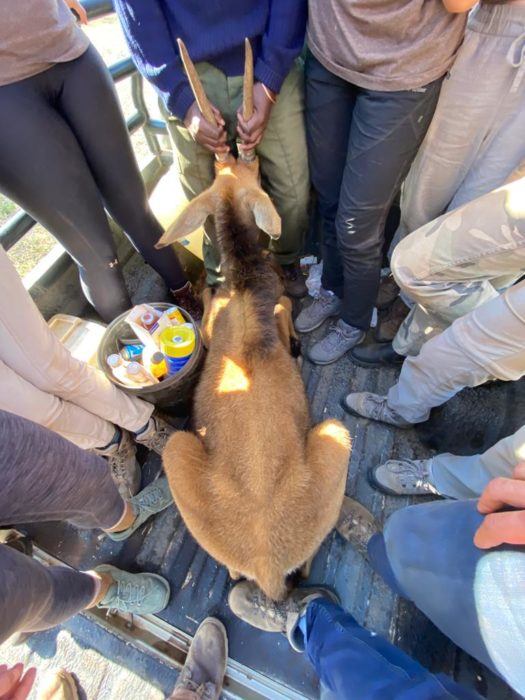
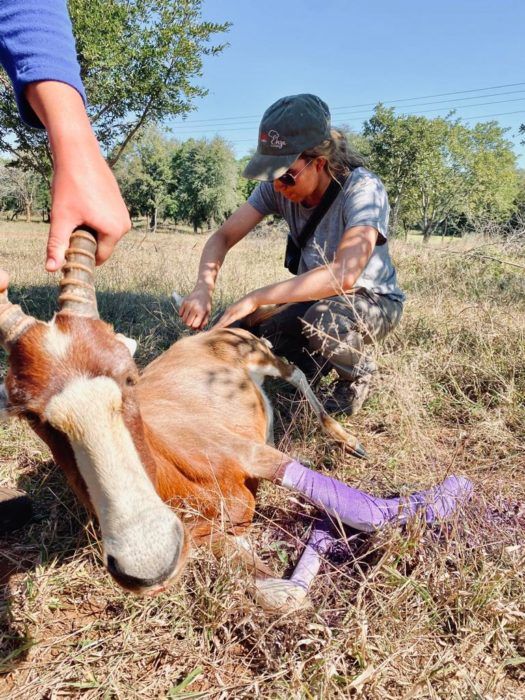
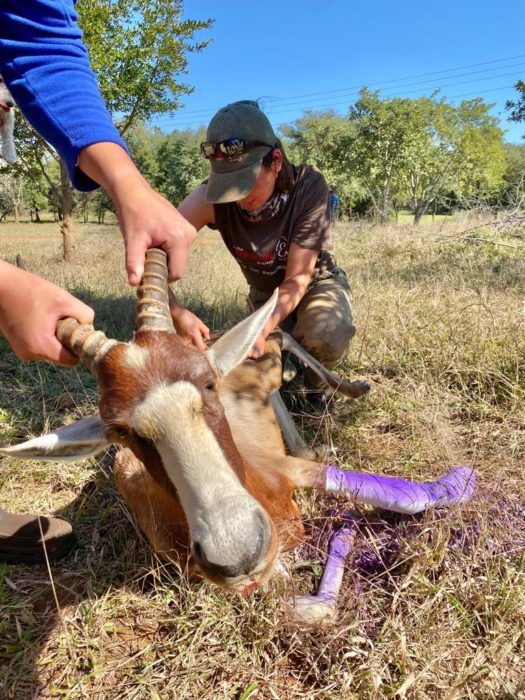
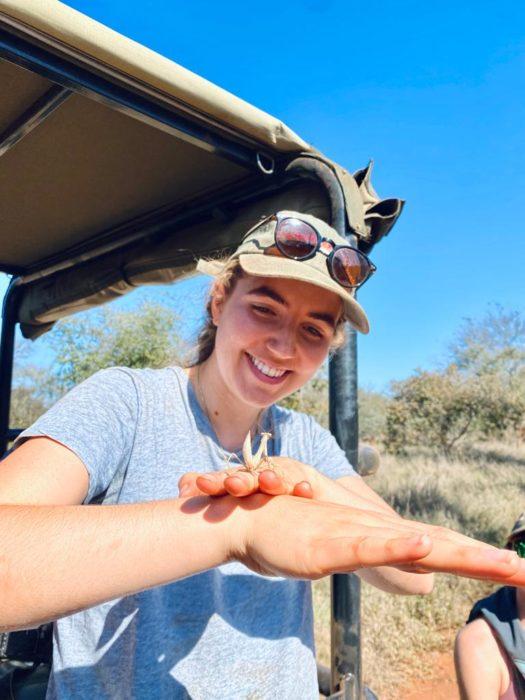

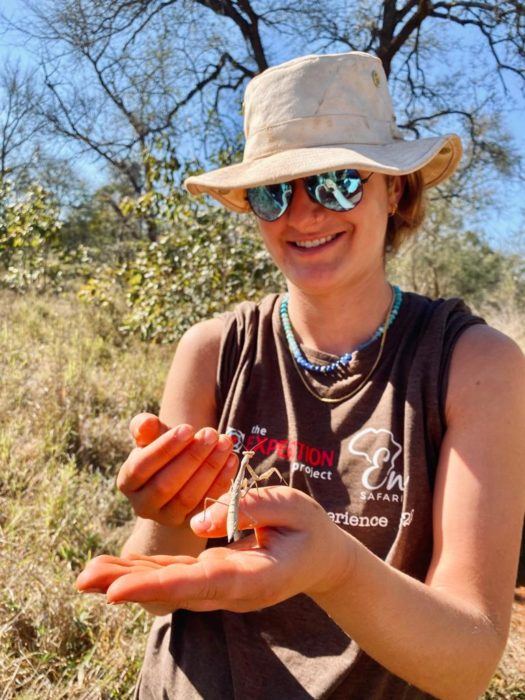
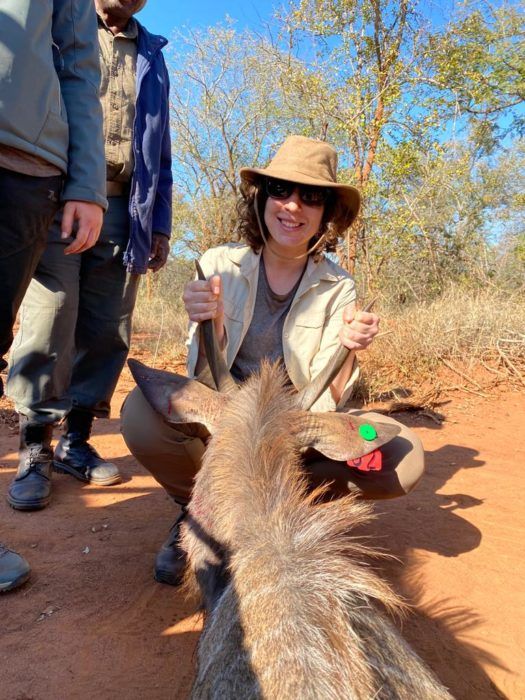
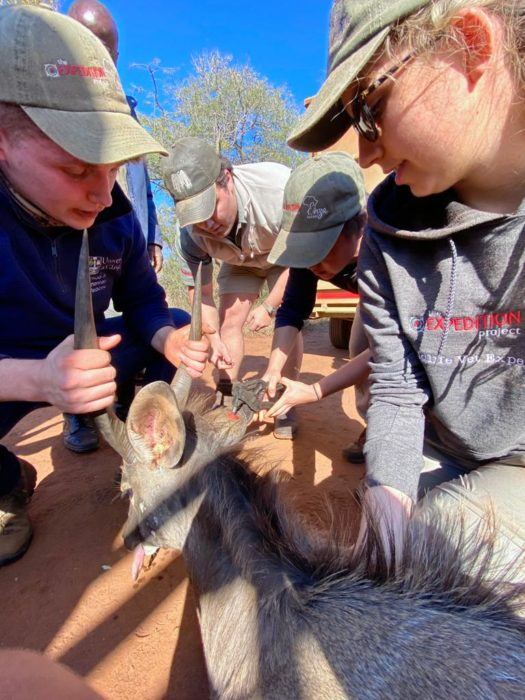
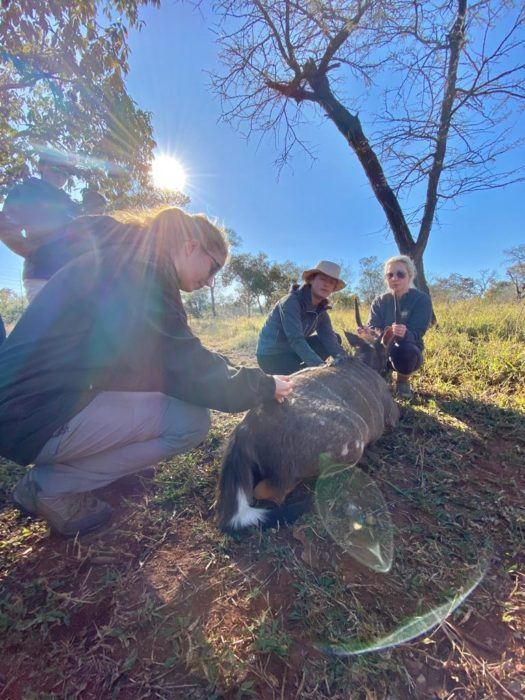
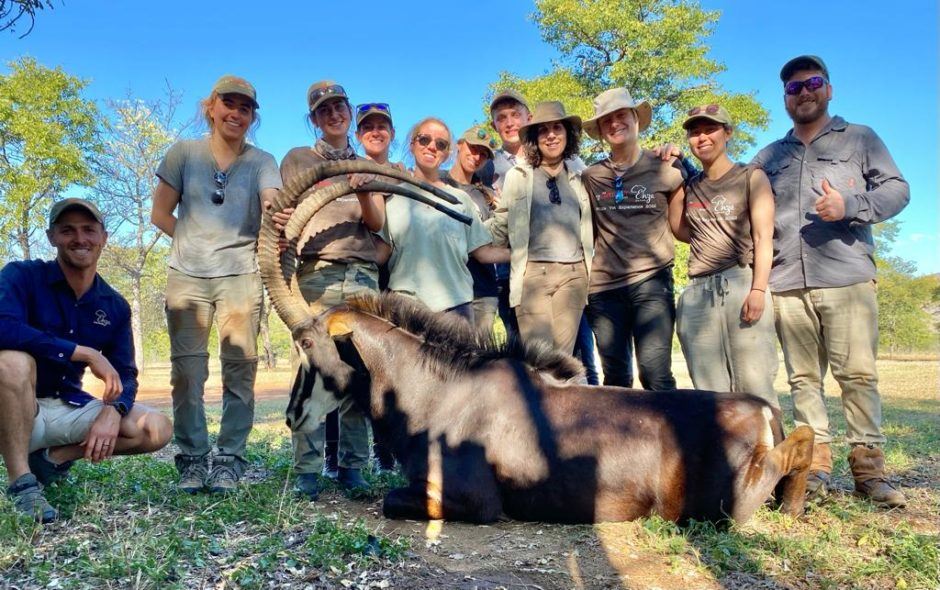
**Highlights
- We met Dr Bossie at the first game reserve where we darted a Roan calf to administer its vaccination booster for resp disease.
- At the same reserve, we darted and transported 2 juvenile Nyala bulls (males) to move to a different herd because they had just become sexually mature and they would not be able to compete with the existing male in their initial herd
- We then had a brief break where we discovered a female Praying Mantis, which was white to match the winter grass and will turn green in the summer to camouflage itself
- We took lots of pictures
- During that time, our lovely Rico helped to sort out camera settings for wildlife photography
- Then an emergency call came for a broken left forelimb (antebrachium) of a Blesbok. We arrived after the cast was applied, however, we were there to give antibiotics, anti-inflammatories, and a vitamin injection
- It was an open fracture which needed to be realigned. He did not use any metal plates or pins. There is a poor prognosis but the owners had sentimental value for the animal, so they thought it was worth a try to fix.
- We got called next to a sick sub-adult sable male who was being bullied by the dominant male and unable to eat. They had to expedite his sale to another reserve, to save darting him again before transferring and to make sure he actually recovers from malnutrition
- The offending got caps put on his horns in order to protect the tips of the horns from breakage. At the same time, they updated measurements of his horn (base-to-tip, horn circumference, and tip-to-tip) to assess reproductive performance.
- That was the end of the calls for the day, afterwards, we had a wonderful chat with Dr Bossie at a local restaurant (despite looking worse for wear) and had a lovely cold beverage. Topics discussed included: blood transfer/transfusions, rhino horn trimming, anthelmintic and antibiotic resistance, fracture assessment and management, antibiotic choice (dependent upon scenario and species), toxicities, and neurological presentations.
- Our drink was by a river which had hippos and crocodiles (though we did not see them) so we also discussed the restraint of both species.
- On the ride back, many of us were nodding off due to the busy day, and were greeted by a nice dinner of traditional South African food (boerewors-beef sausage cooked on the fire, and pork chops) and off to bed for another early start tomorrow
Day 5 (Thursday)
Rhino dehorning (AM)
Yesterday was an incredible day, starting early with a wake-up at 5 am armed with knowledge and appreciation for the rhino species from a briefing the night before.
We made our way to an undisclosed location to participate in a rhino horn-trimming operation. Making an effort to save 4 rhinos, it was a once-in-a-lifetime opportunity to monitor these majestic creatures as the project happened. An emotional morning where a real difference was made. From there we relocated 12 Nyala females. The special day was capped off by a sunset swim and drinks around the pool.
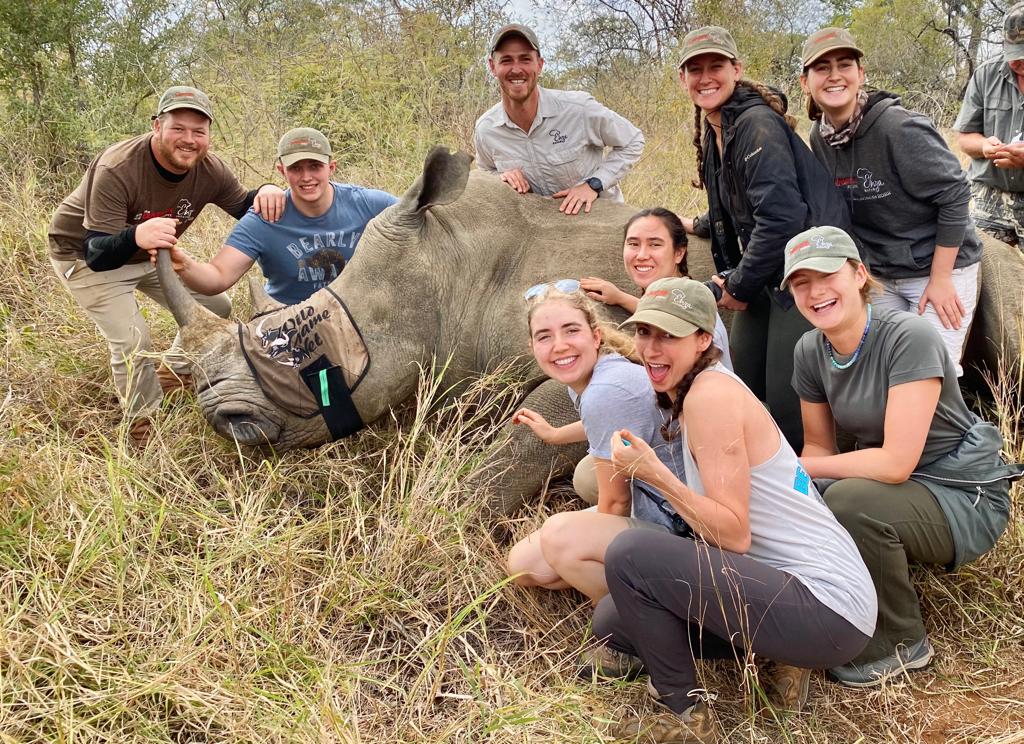
**Highlights
- We arrived at our special event of the week with grins up to our ears and excited for the work ahead we were told that we would be darting four different rhinos and trimming their horns, and performing other routine procedures. However, before then he showed us two of his more tame rhino – Buttercup and her calf (yet to be named) – which once we all drew lots one of us was able to help feed them with the guide.
- After we had a conversation about the state of the African White Rhino populations in South Africa as the Northern White Rhino population was officially deemed extinct as the last male recently passed due to ill health and there are only two Northern African Rhino females left.
- Furthermore, the Southern White Rhino might also be extinct by April 2023 according to the data if no action is taken, the best way to prevent this is to legalize the rhino horn trade. Although sounding counterintuitive, It made a lot of sense as it would allow the poaching industry to be gutted as they could decrease the value of the horn and flood the market with their current reserves so the money from the horn could be put towards conservation, while taking the incentive away from the poachers.
- After that discussion we went over the procedures, the different teams involved and what the process would be. Some of us were able to go up in the helicopter with Dr Bossie and the pilot Jerry to observe the Rhino from above and see the darting procedure.
- Once the animal was darted we would observe from the helicopter the signs of immobilization and Gerry would expertly navigate the rhino herd so that the Rhino went down into an area of the bush where it was safe for the animal to be brought down by the team and it was accessible for the routine procedures to be completed.
- Once safe to approach the team placed a blindfold on the Rhino to reduce the impact of external stimuli from startling and aggravating the animal and pushing the animal onto the ground.
- When this was done we were waved forward to help and were assigned some roles, the procedures that were done to each rhino were:
- Ear notching in large segments so the animal is identifiable from far away.
- Monitor the breathing so it doesn’t fall below 6 breaths a minute which was a wide safety margin
- Hair was taken from the tail, flakes of the horn, ear notch segments, and a blood sample from the medial radial vein which would be used for DNA and heritage testing.
- Microchips if not already present were inserted at the tail base and the hump, numbers recorded, so the animal’s identity can be confirmed if darted again to be moved, sold or for any other reason.
- Then 4 inches from the base, away from the horn growth plate, blood and nerve supply (so the horn can grow back), the front horn was trimmed using an electric saw and then the smaller back horn was also trimmed and placed in a labelled bag to be put into storage which would then be microchipped.
Day 5 (Thursday)
Vet shadowing with Dr Boshoff (PM)
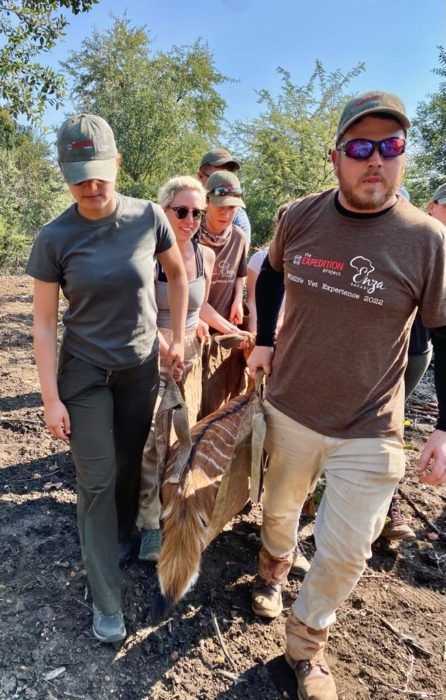
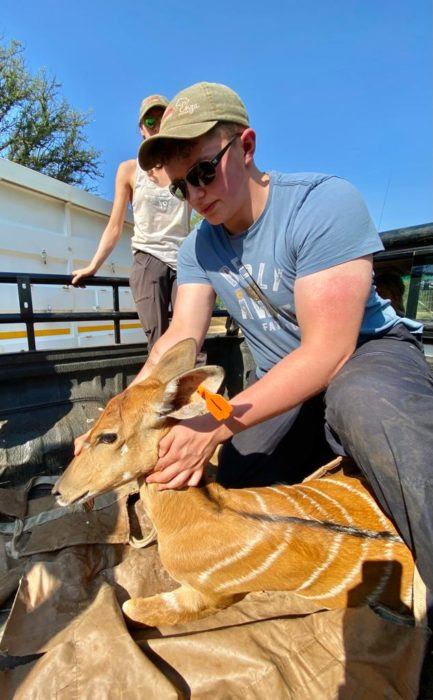
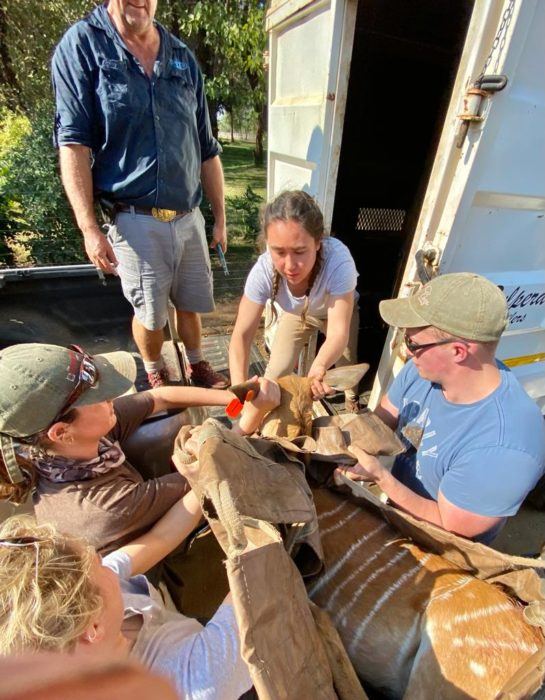
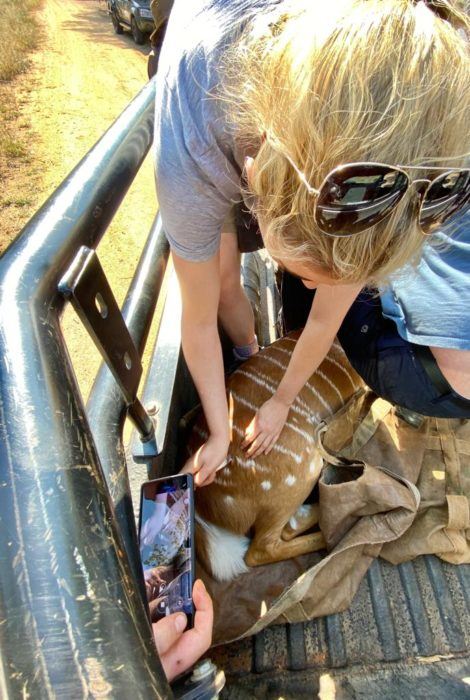
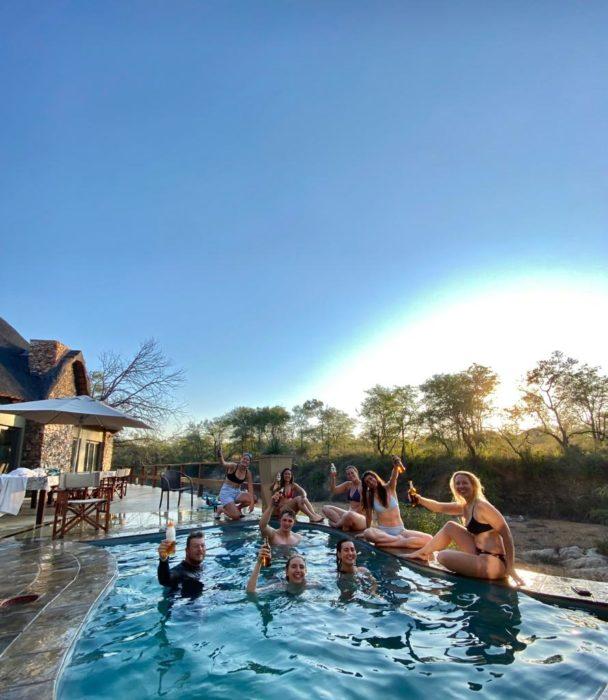
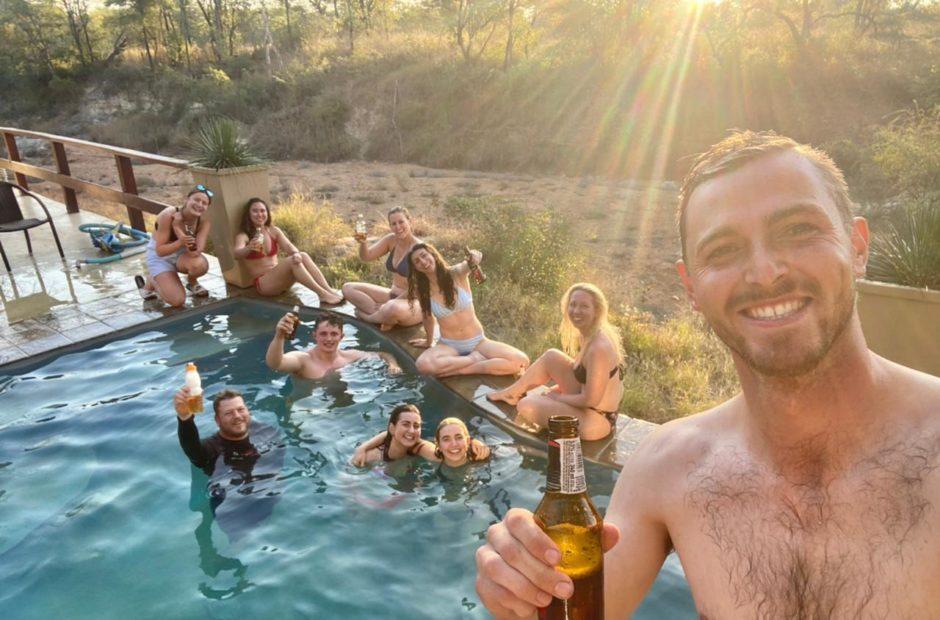
Day 6 (Friday)
Rest day
Today we are having a rest day. We had a slower start, with some students going for a 6km run through the bush. We will be relaxing in the dry river bed, playing games and enjoying some time off after a busy few days. This afternoon we will visit a local tourist area and go for a drink and meal at a unique restaurant.
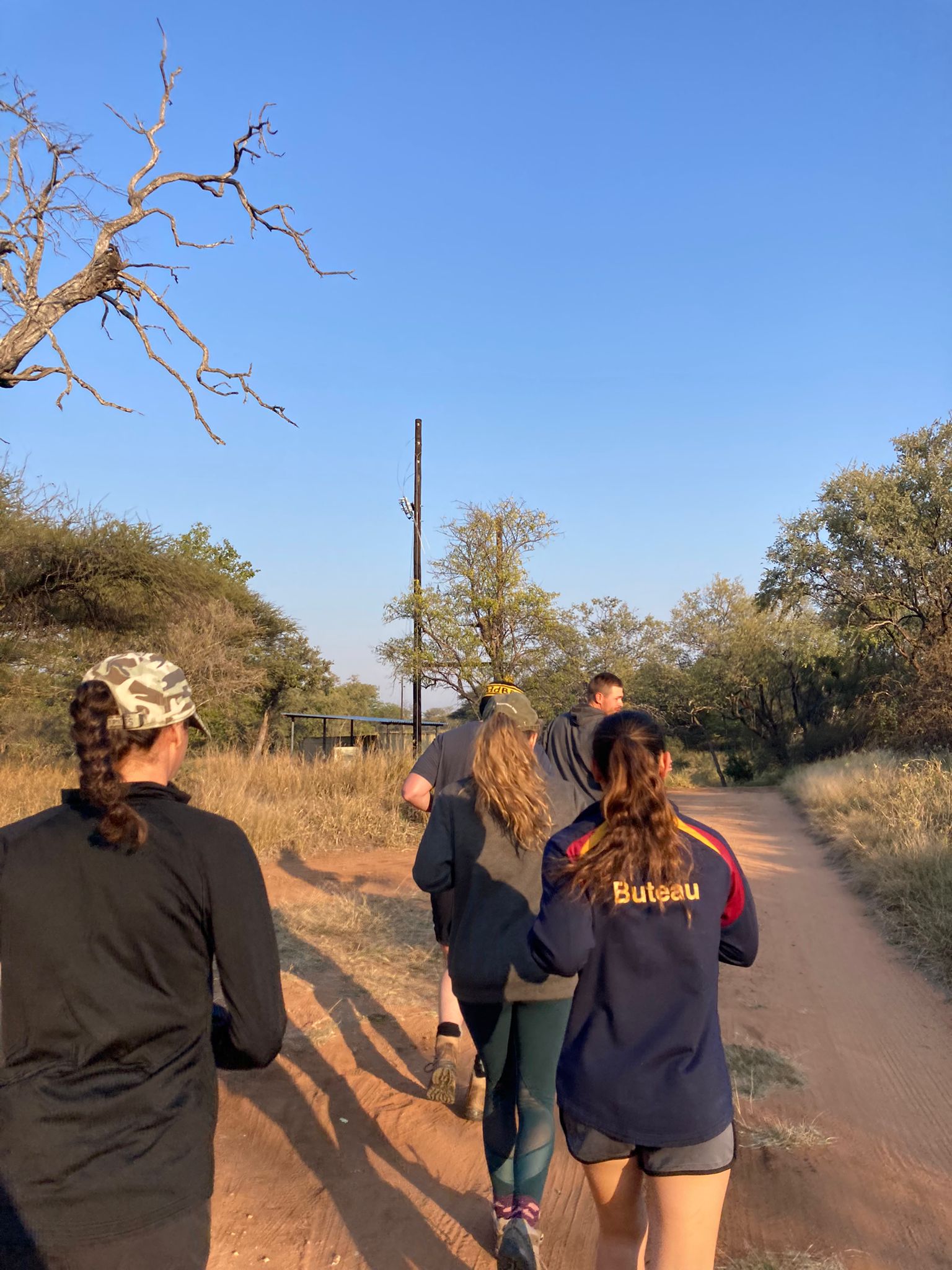
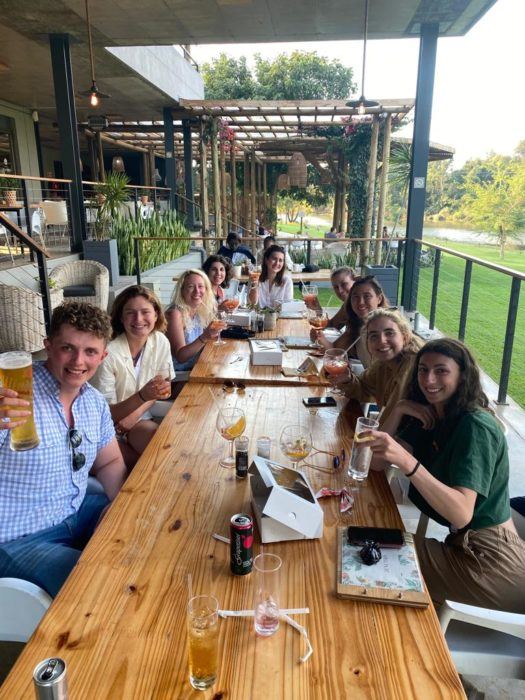
Day 7 (Saturday)
Travel day
We visited a famous Baobab tree and then made our way to our next accommodation.
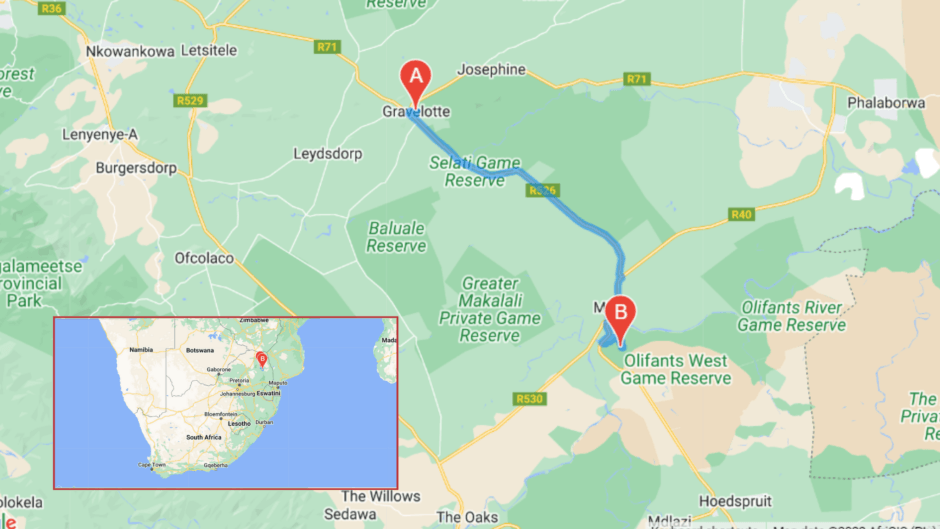
Week 2 Accommodation
Read more about Bundox Explorer Tented Camp accommodation here.
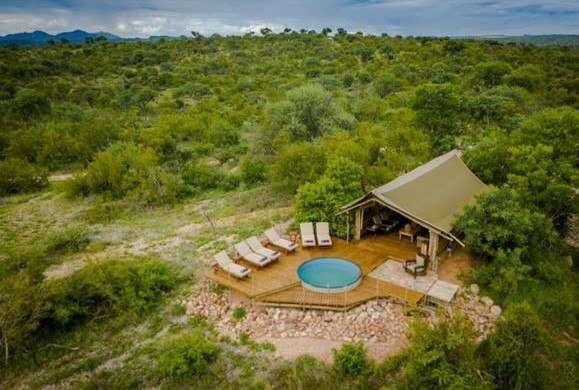
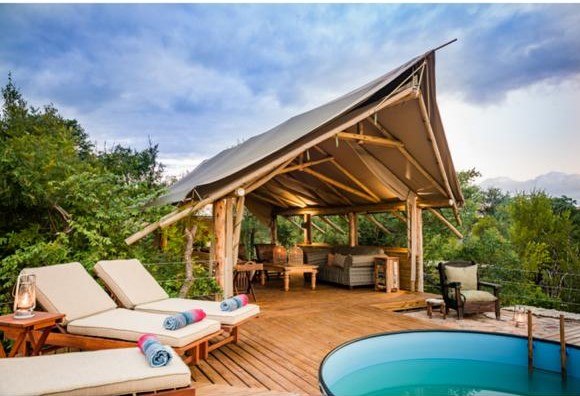
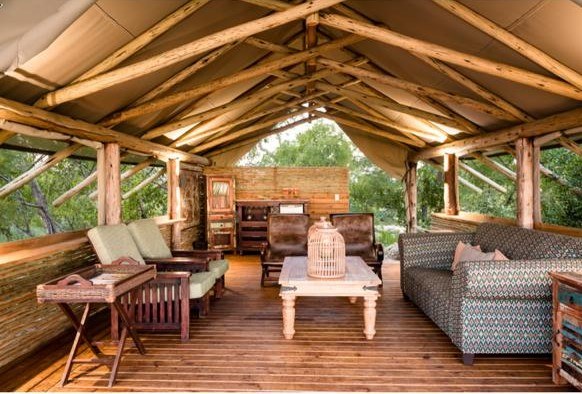
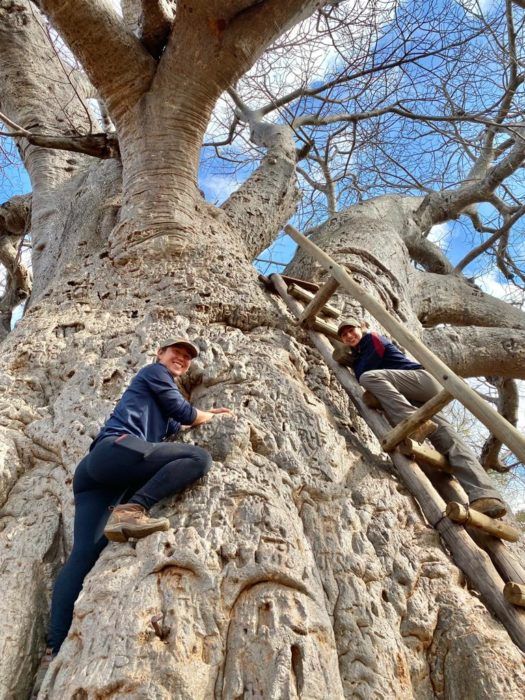
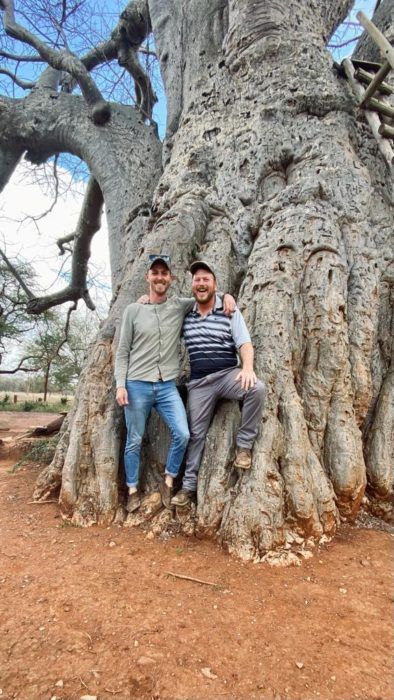
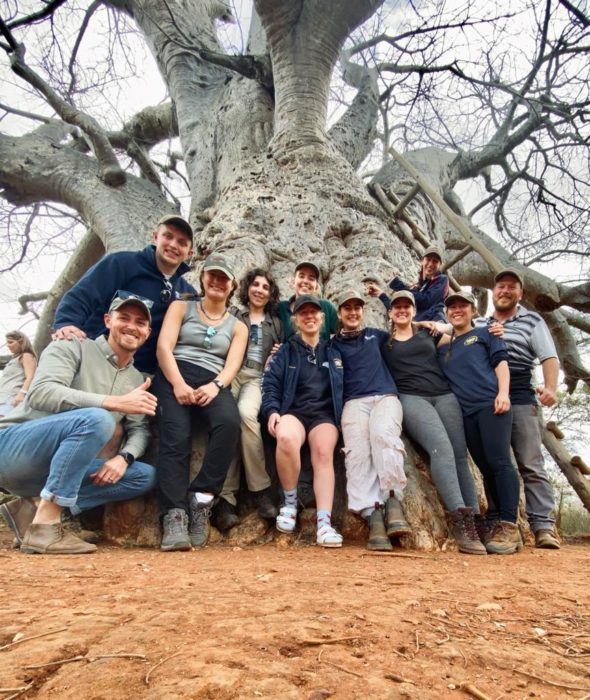
Day 8 (Sunday)
Day off activities
Waking up in the breathtaking Bundox Explorer Camp is enough to get anyone enthused about South Africa and the importance and wonders of nature…especially because we are camping…well ‘glamping’!
The day has begun with an unbelievable game drive. We saw male lions that had just killed another lion, as well as elephants drinking from a waterhole.
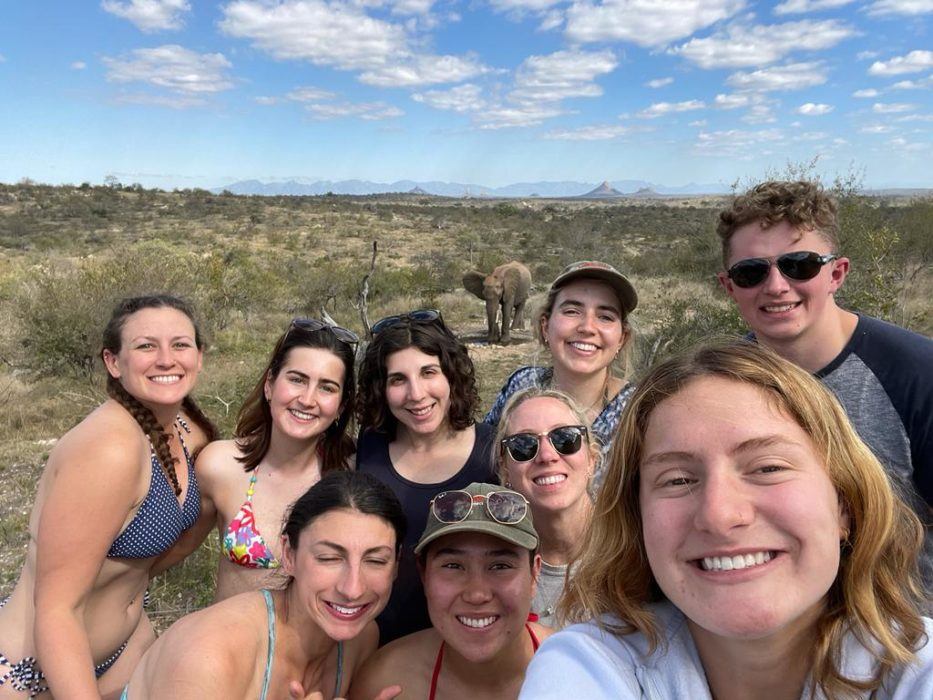
More to come…
Day 9 (Monday)
Hoedspruit Endangered Species Centre orientation and management
Day 9 was another early start to get to Hoedspruit Endangered Species Centre for orientation and introductions (the animals and people!). Context and understanding are important with centres like this so the team got to know how the centre works and runs, who is involved, and then of course who some of their more famous inhabitants are (the animals this time!). Today was our first day working at HESC, students got their hands dirty early, preparing the feeds for all the animals in their care. It was an amazing experience meeting each animal and learning their special stories. The day was spent going around the whole facility feeding and cleaning the enclosures.
Back to our Bundox tented camp for an evening game drive.
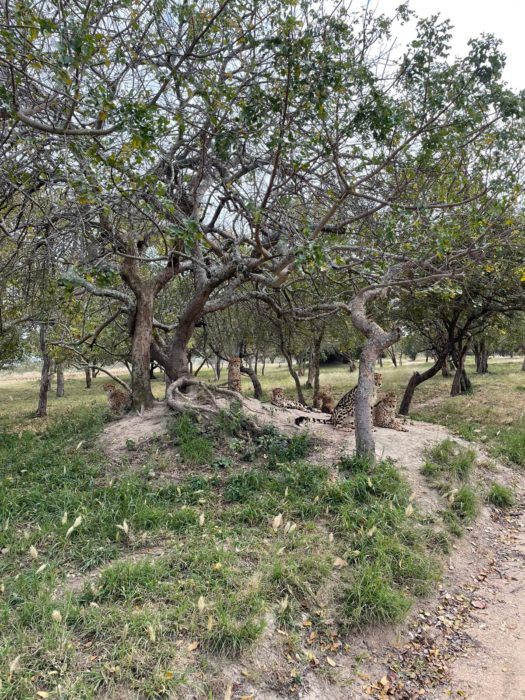
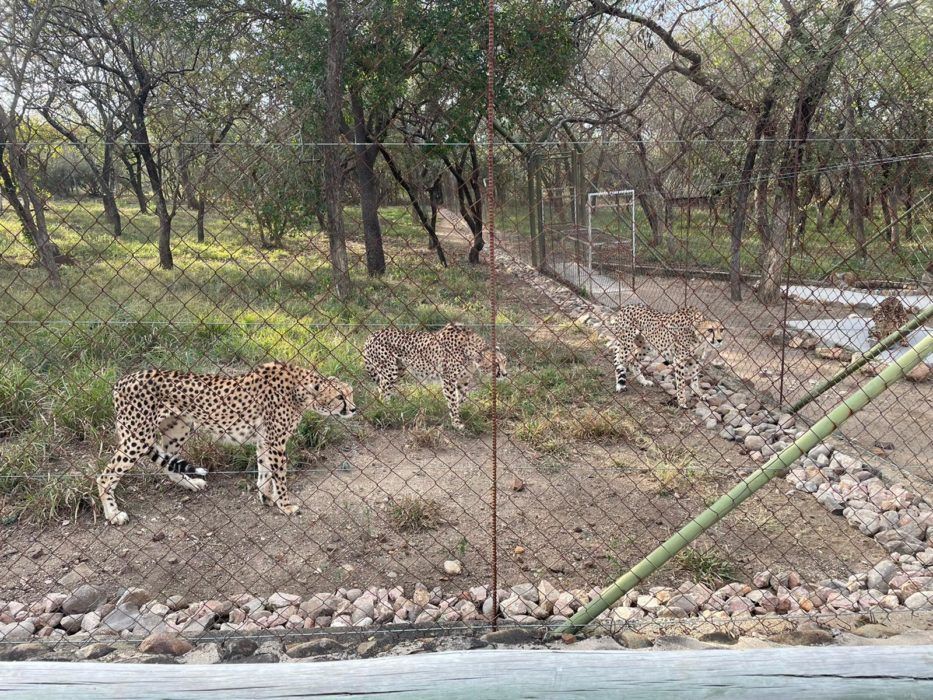
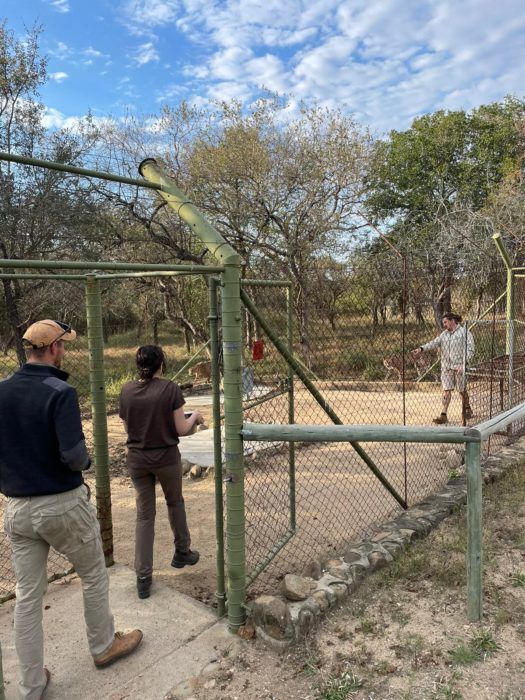
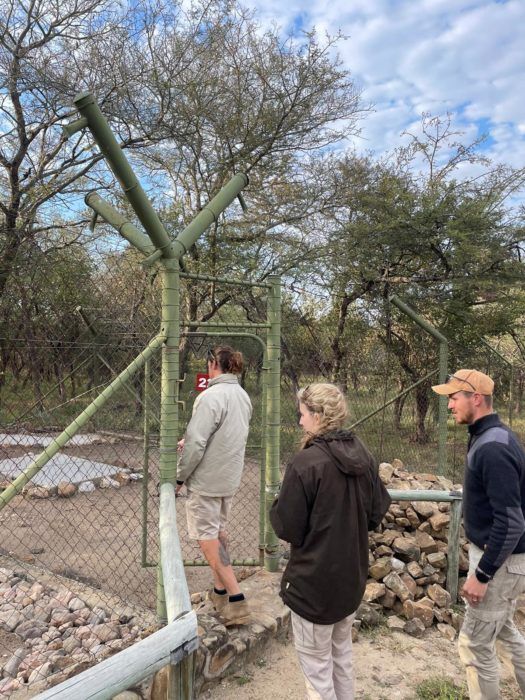
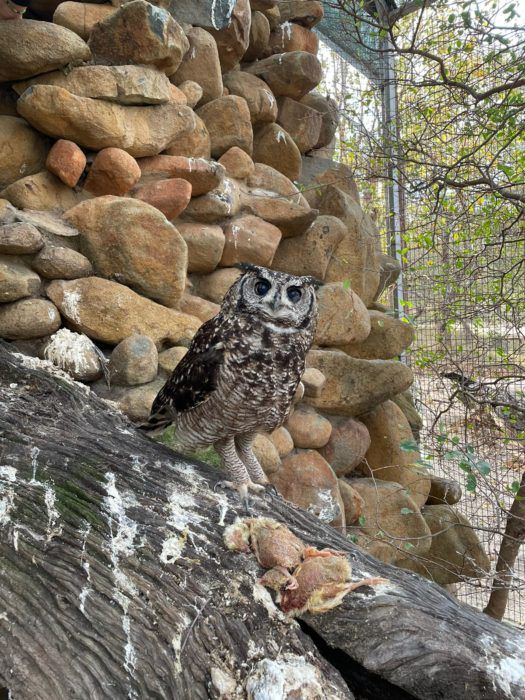
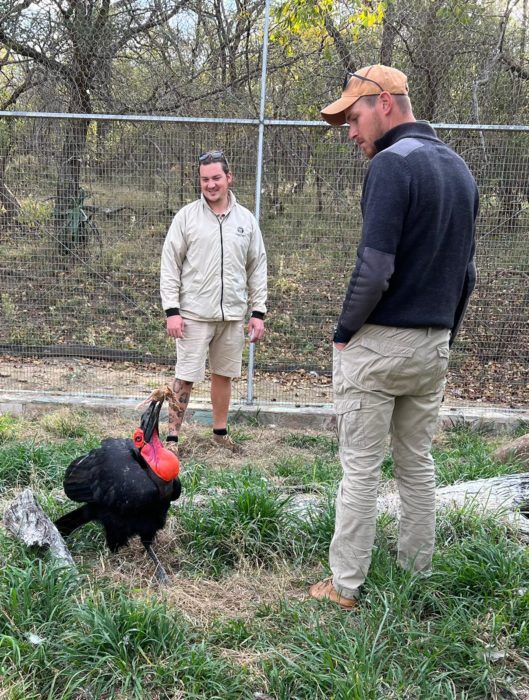
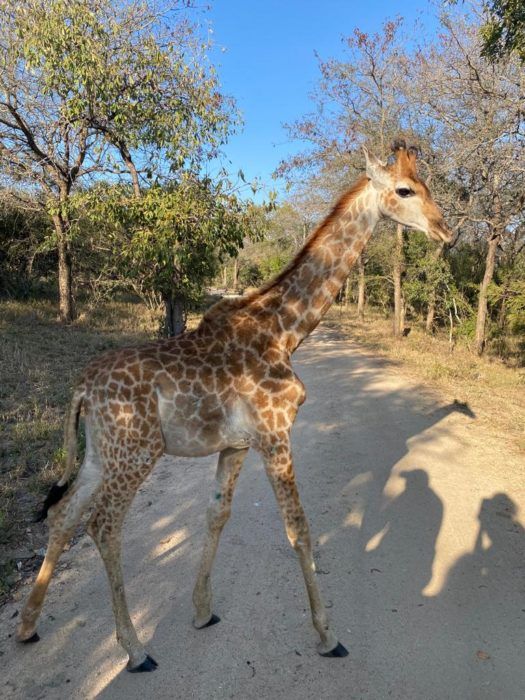
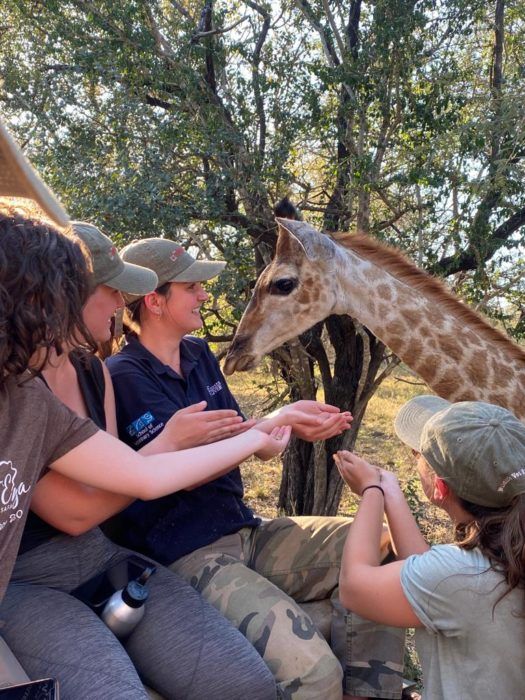
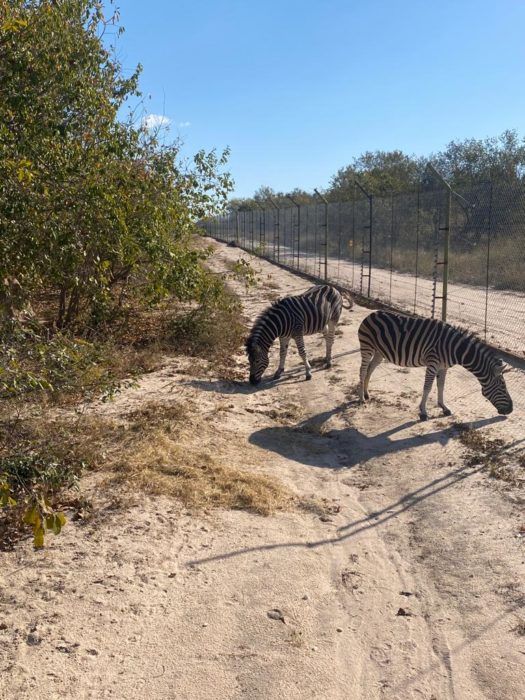
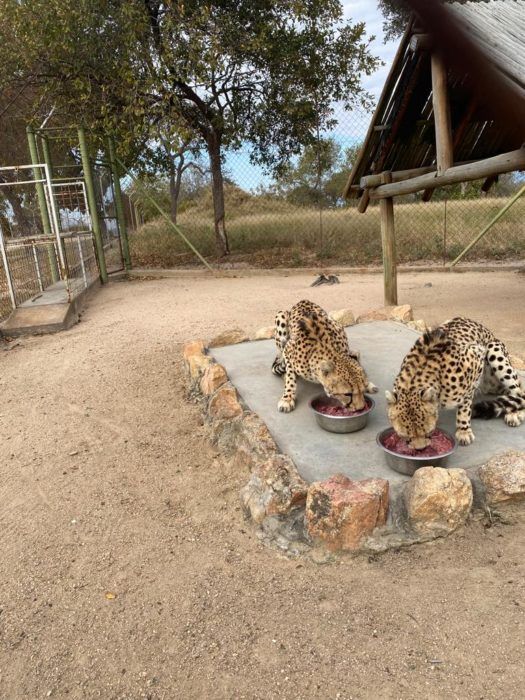
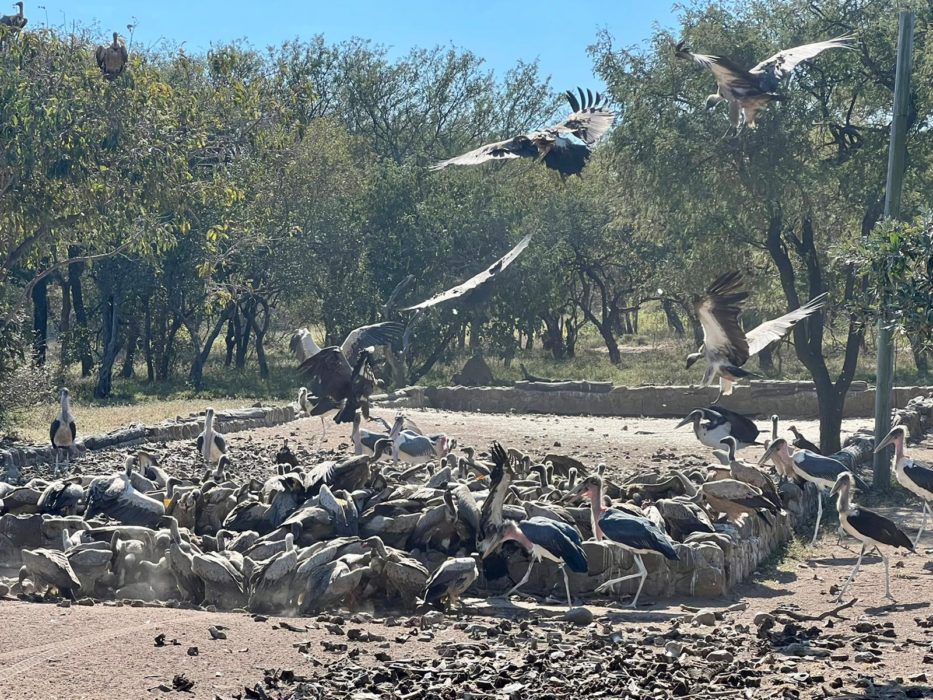
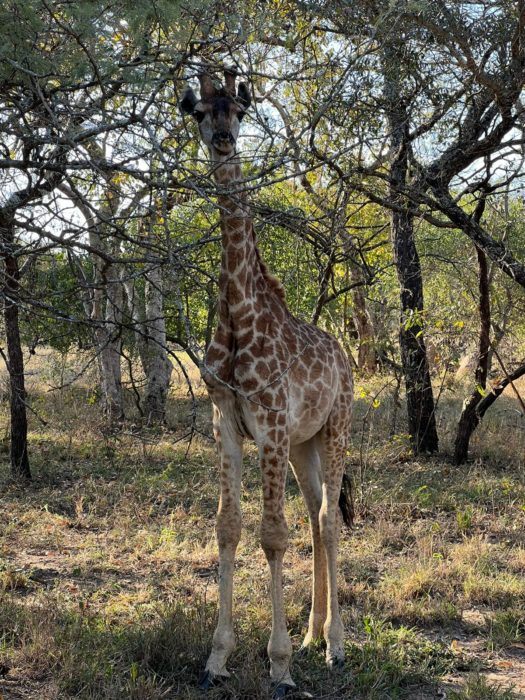
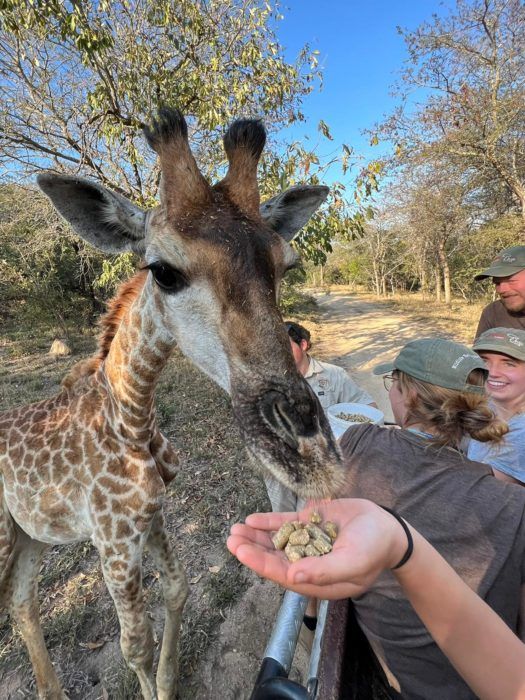
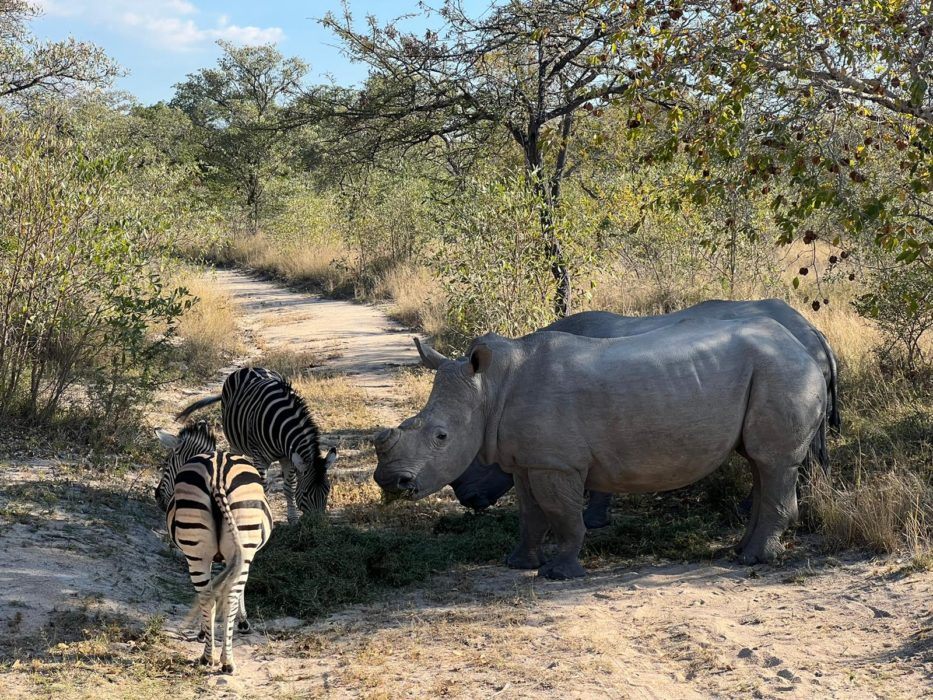
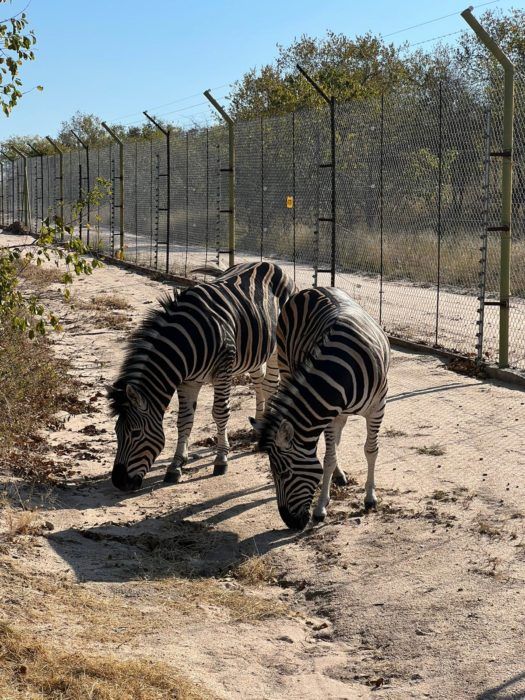
Day 10 (Tuesday)
En route to Hoedspruit Endangered Species Centre

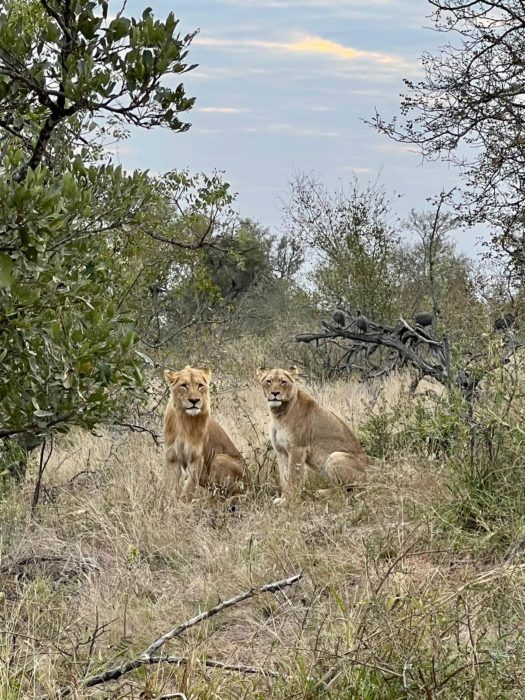
Hoedspruit Endangered Species Centre management and procedures (AM)
The day started the same as Monday, feeding the animals in the facility. Some time spent with some of the baby animals and meeting Doc Rogers in the afternoon.
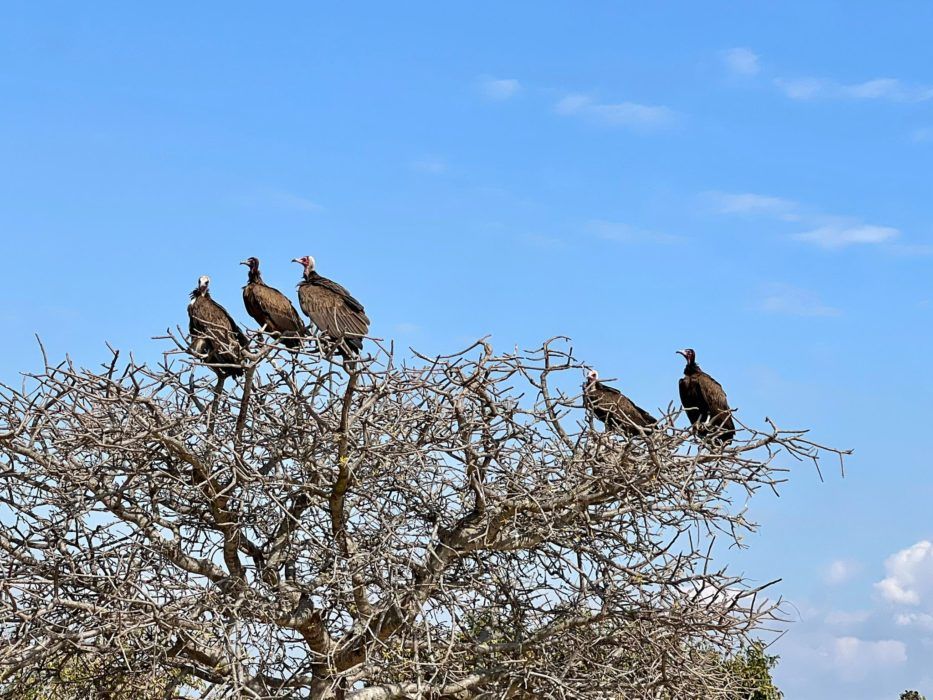
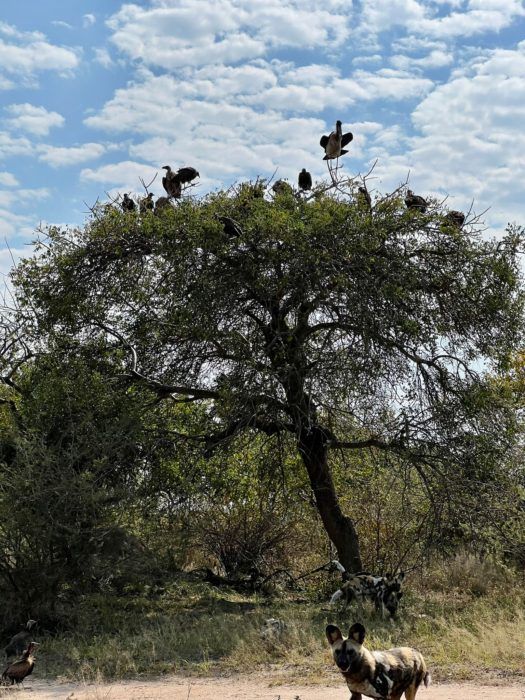
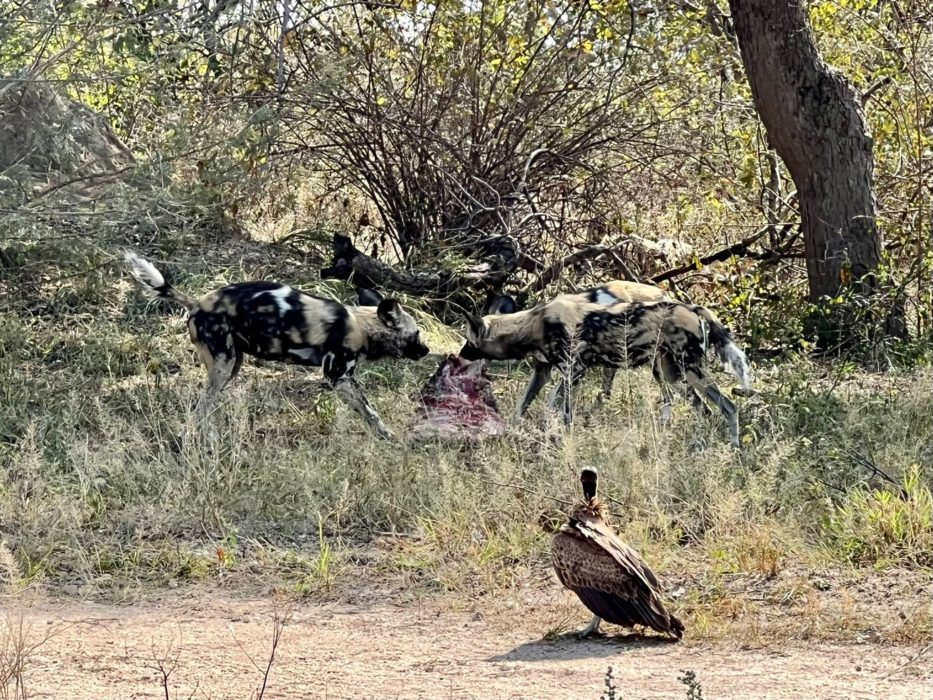
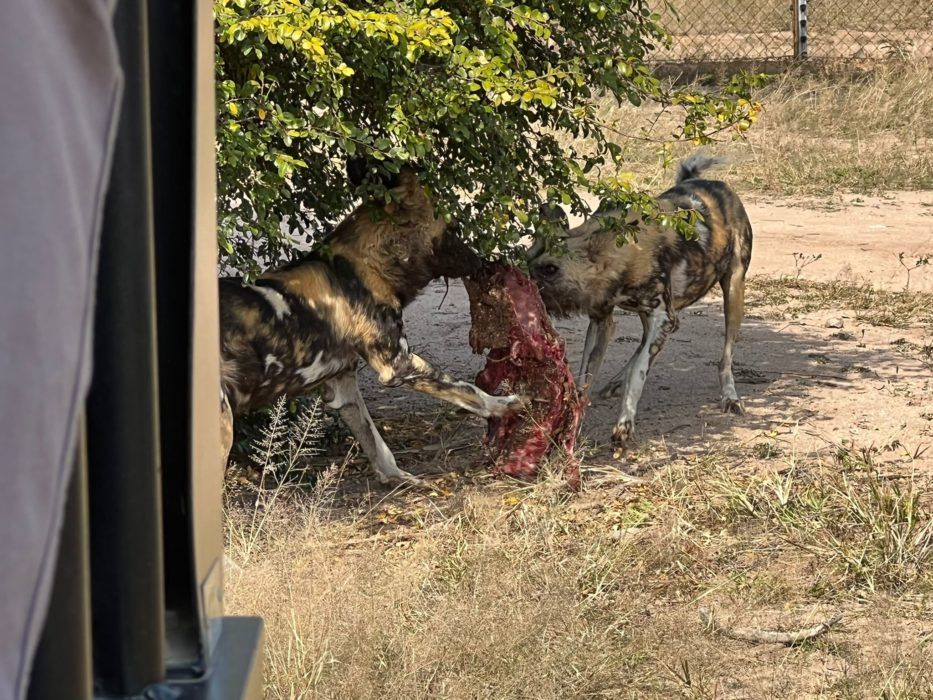
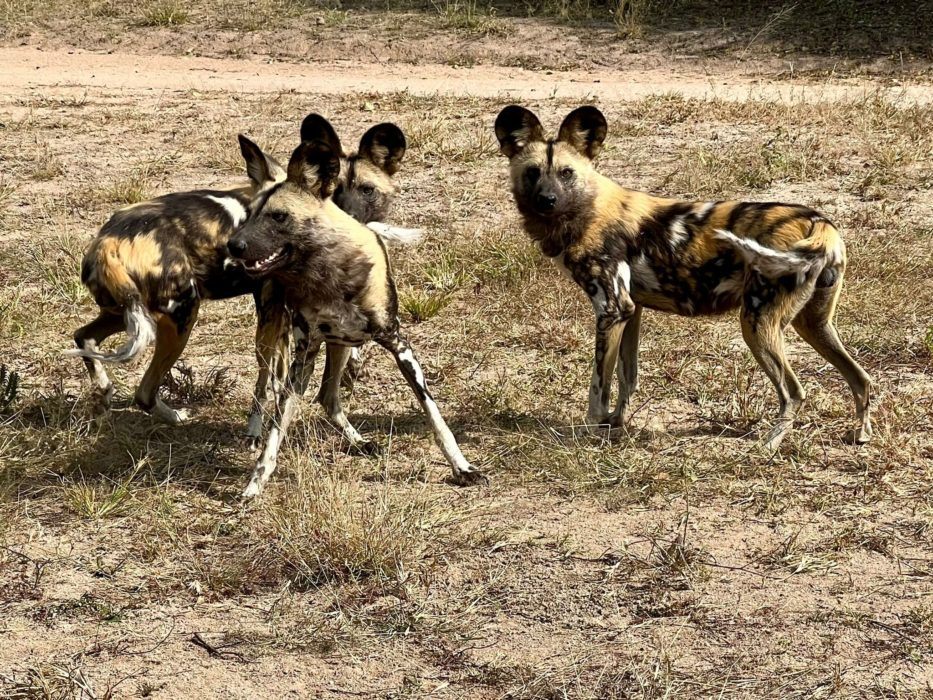
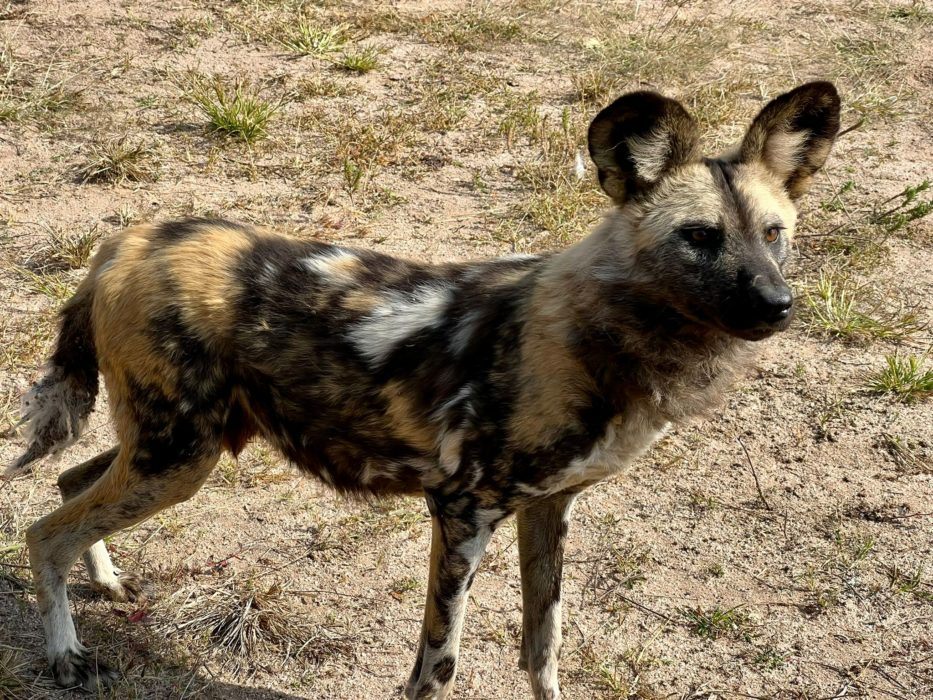
Cheetah checkups with Dr Rogers (PM)
Students had the opportunity to witness the treatment of 5 cheetahs. Treating abscesses and checkups. An experience to remember! The evening was spent around the fire at HESC, with a real South African braai. The meal was cooked on the fire with the whole HESC team and Doc Rogers enjoying the evening together with us.
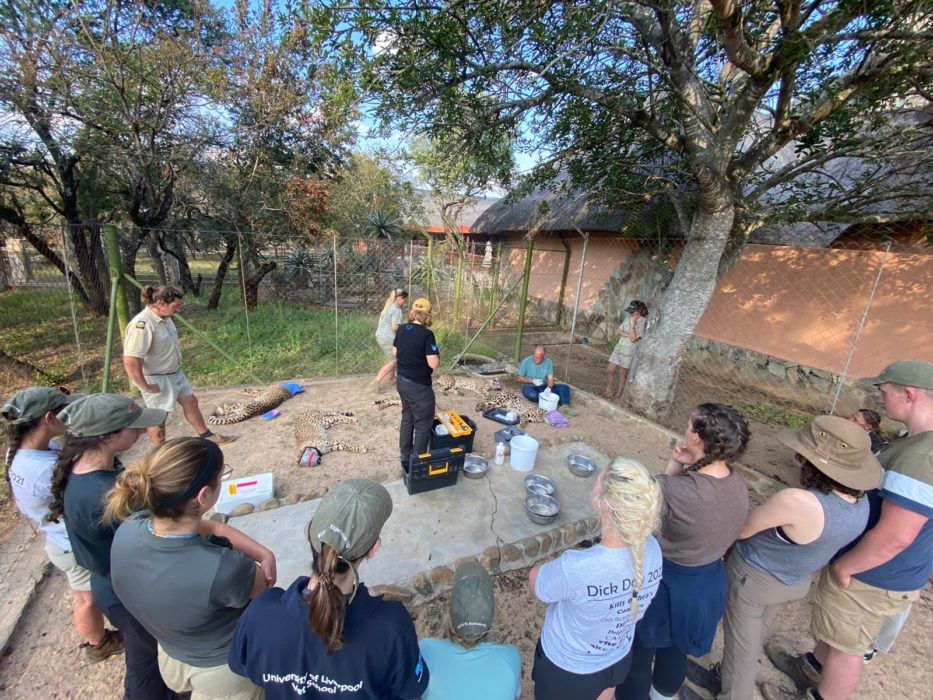
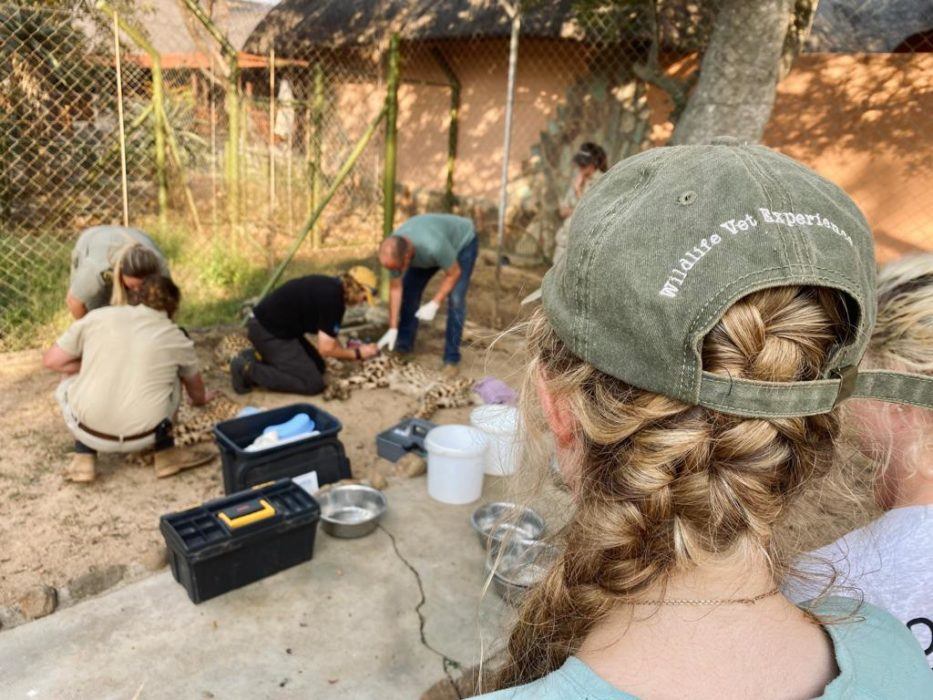
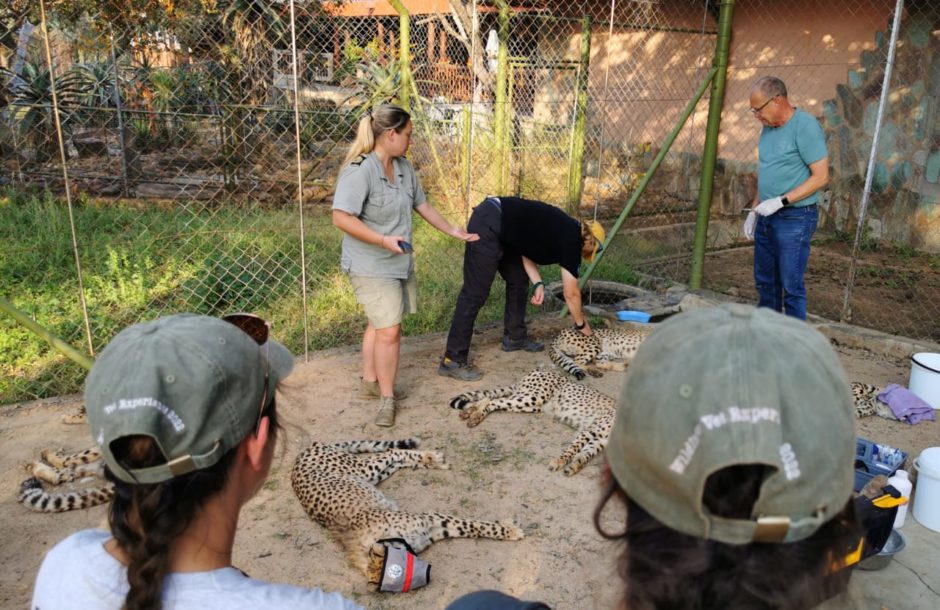
Plus evening braai with Dr Rogers
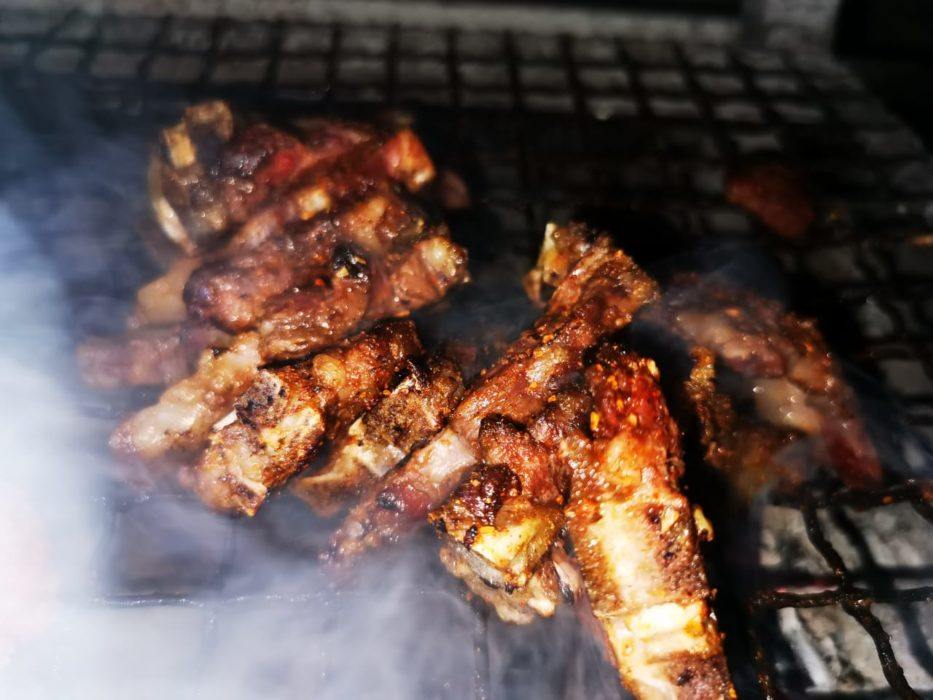
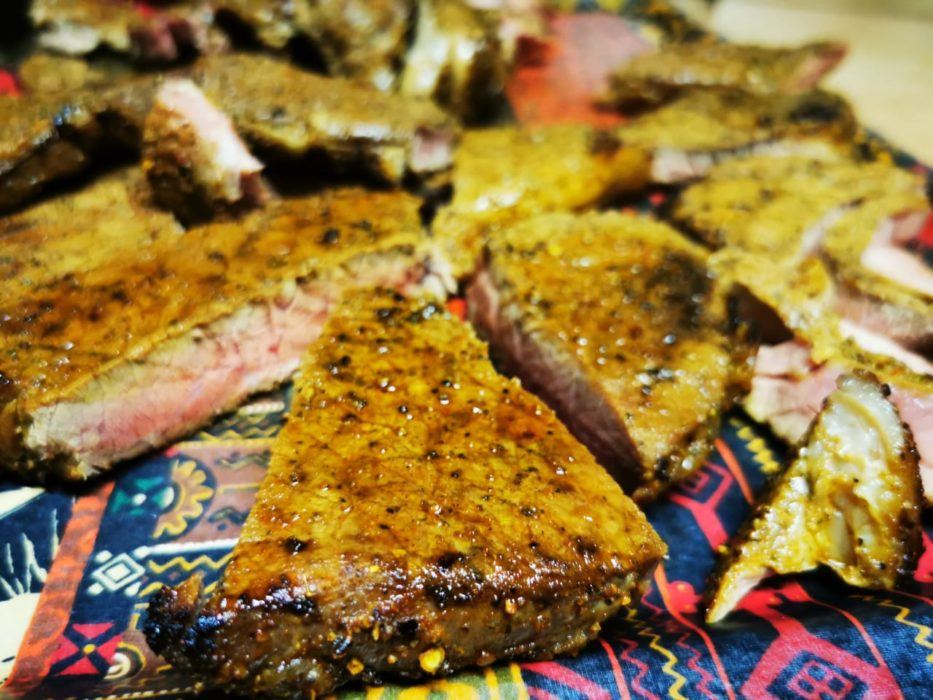
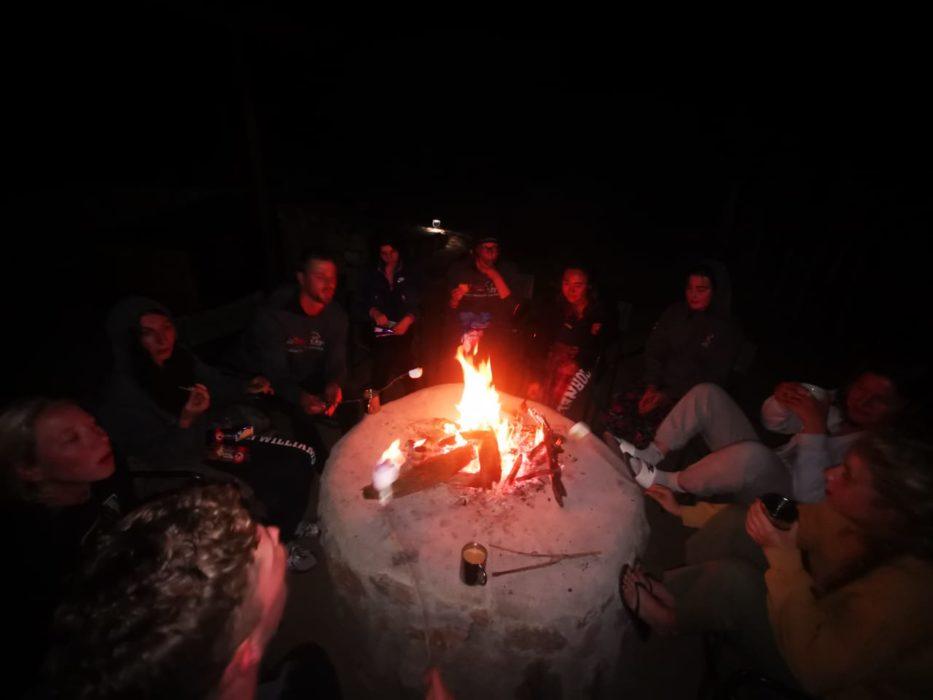
Day 11 (Wednesday)
Hoedspruit Endangered Species Centre management and procedures (AM)
Our last day at HESC. We prepared feeds for the cheetahs and other animals. Did a tour of the facility experiencing the history of HESC from a different perspective.

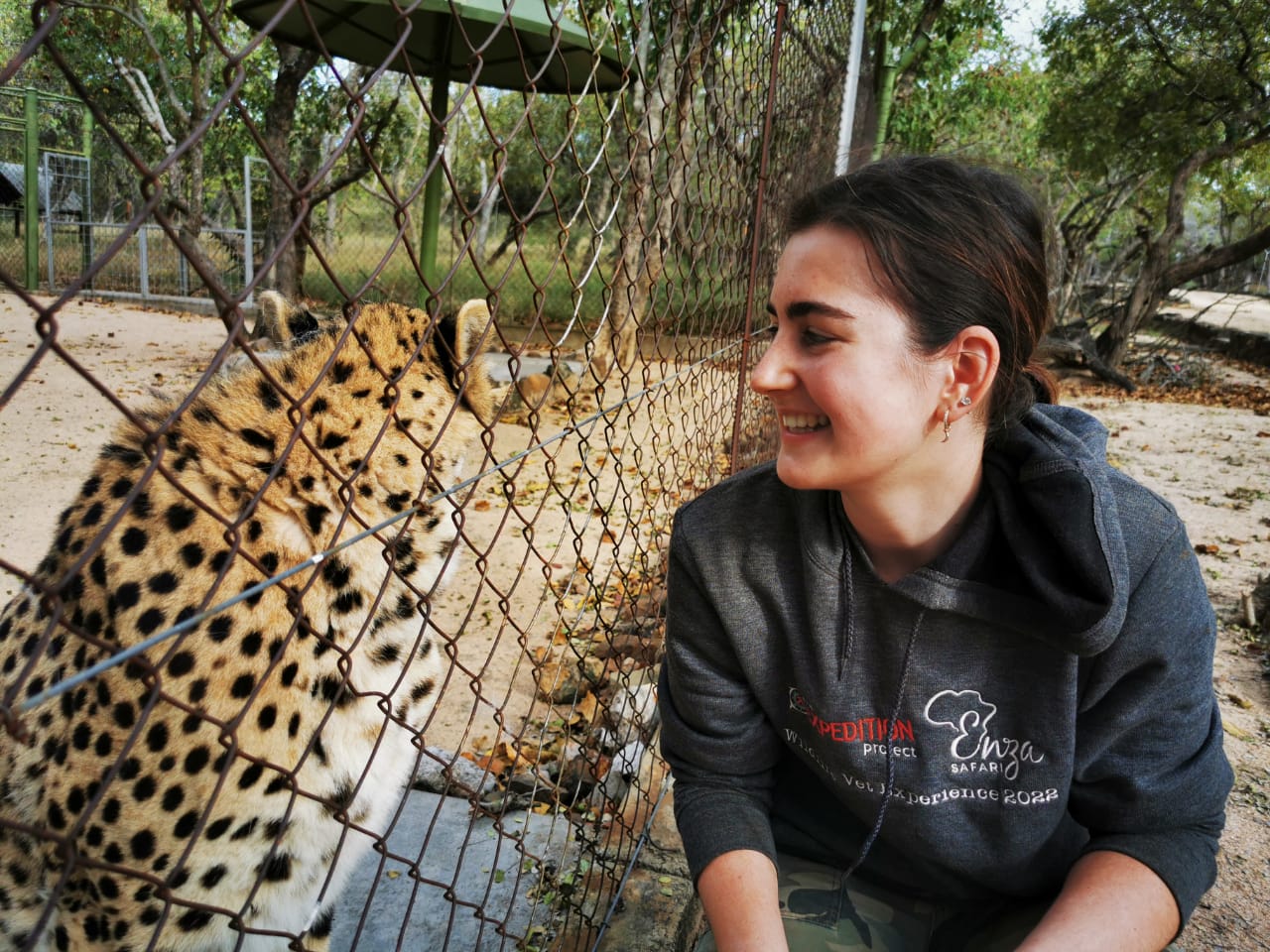
Lectures with Dr Rogers (PM)
The afternoon was capped off with an incredible lecture and presentation from Dr Rogers on the Veterinary work of cheetahs and all the lessons learned from the decades of experience in the field. At the end of the day, the students learnt how to use a Veterinary dart gun and had a practice session.
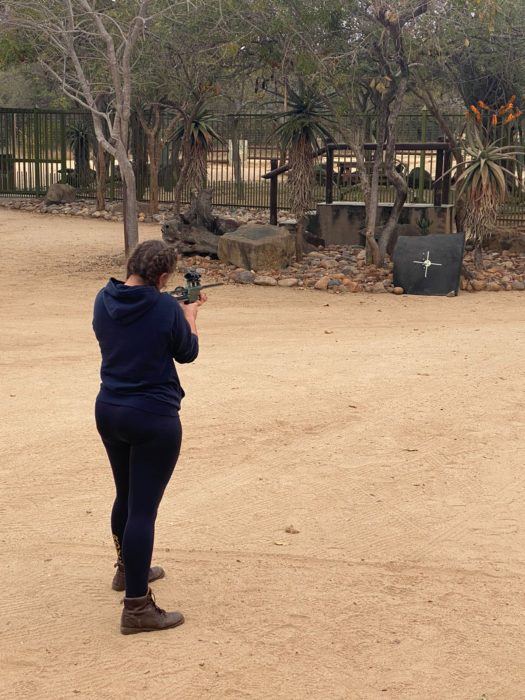
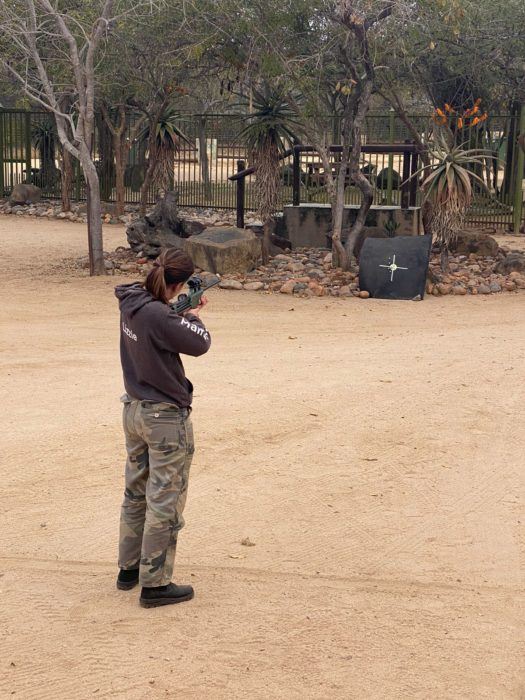
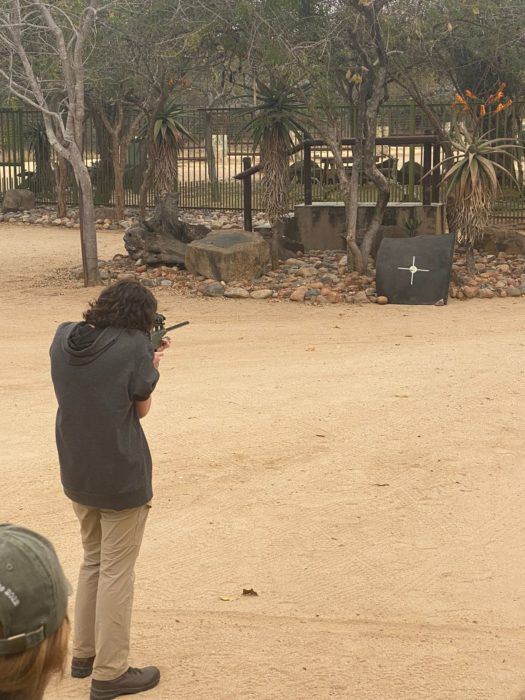
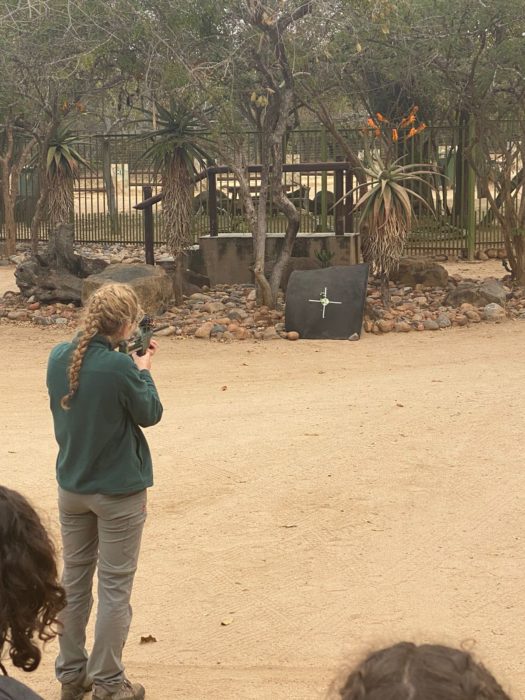
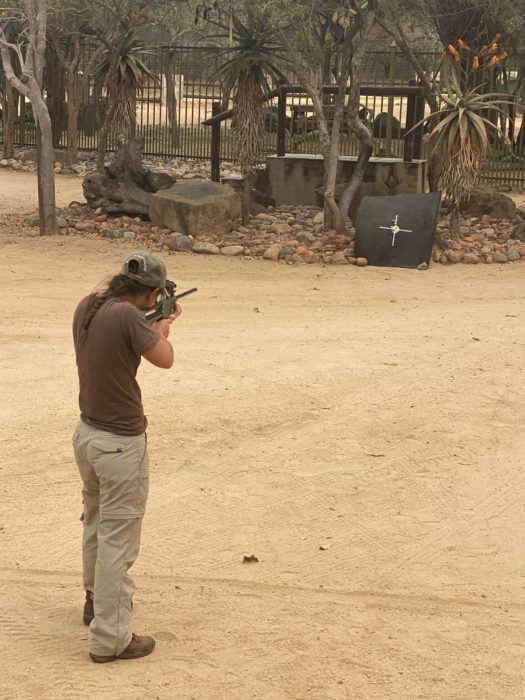
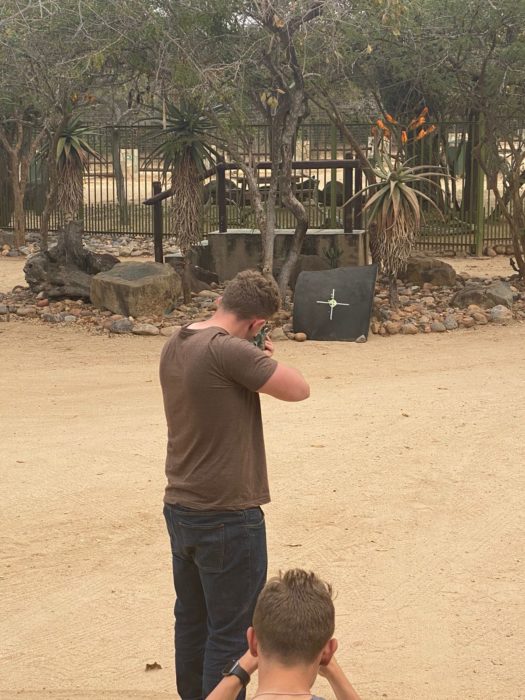
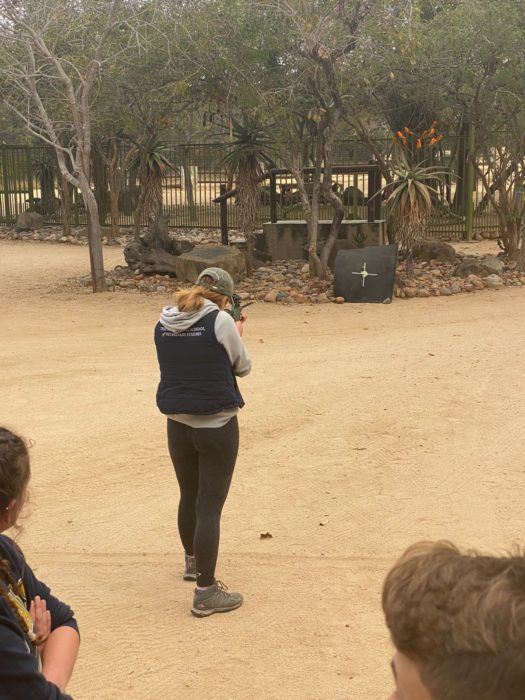
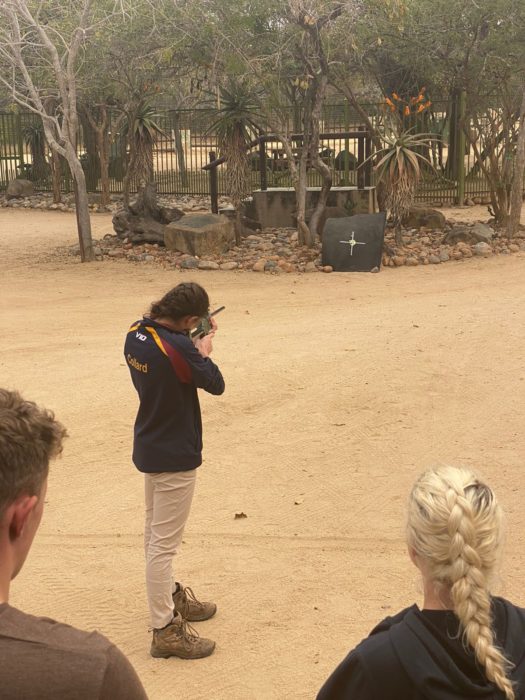
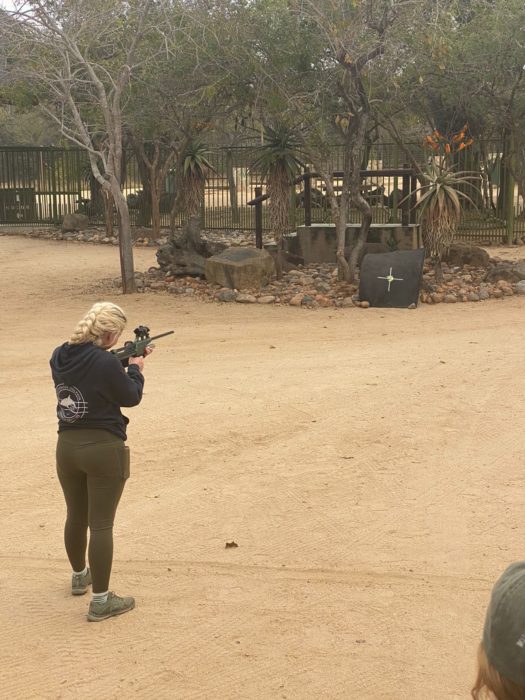
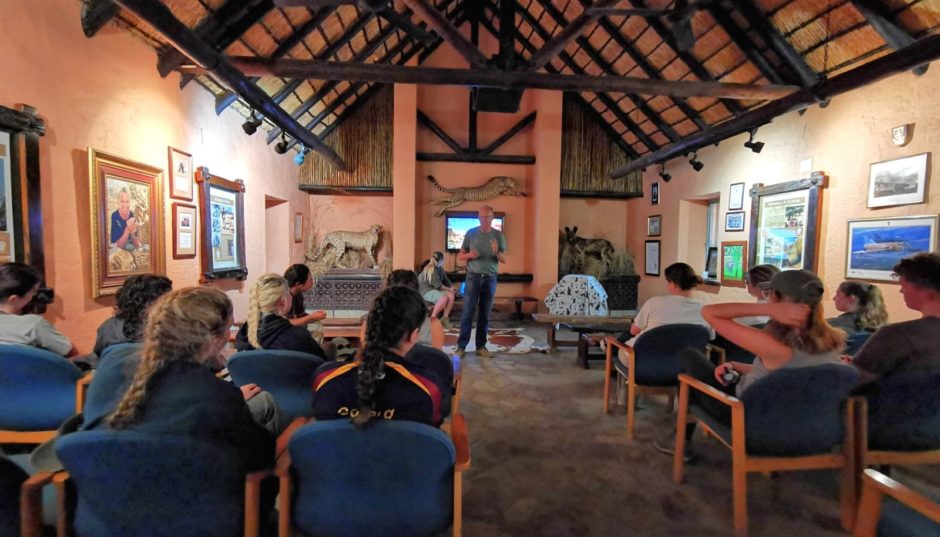
Day 12 (Thursday)
Daktari Bush School (AM)
…more details to come.
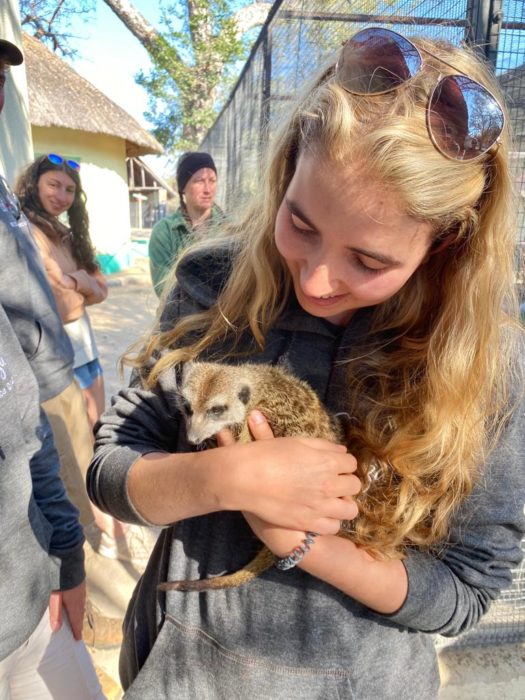
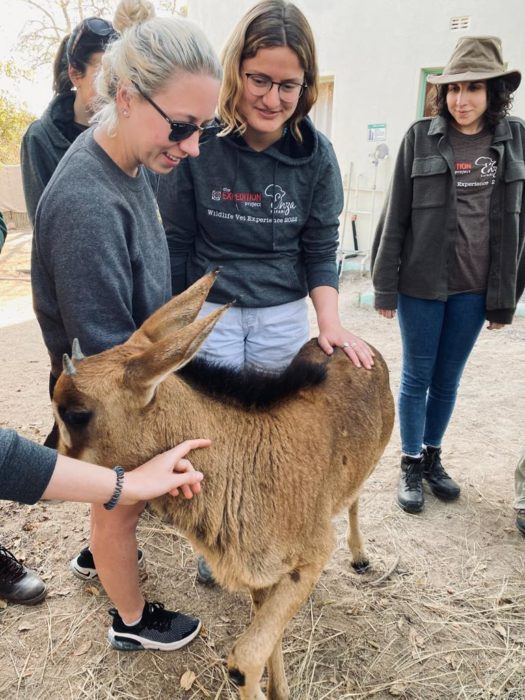
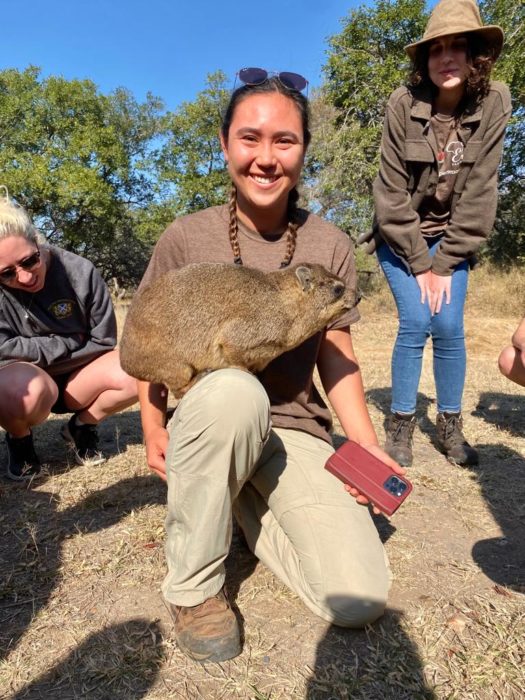
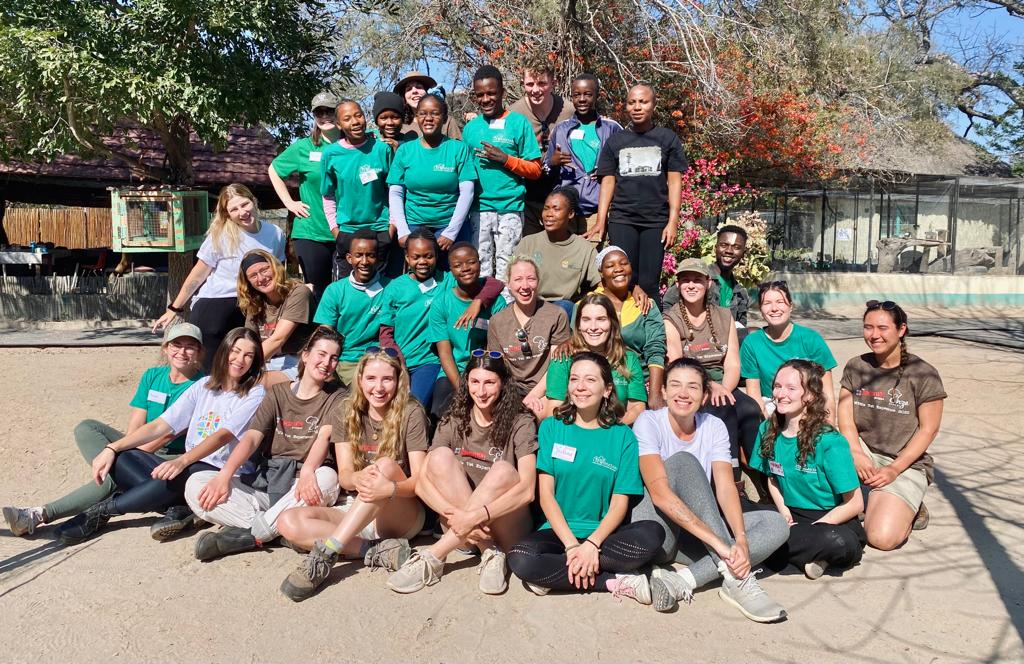
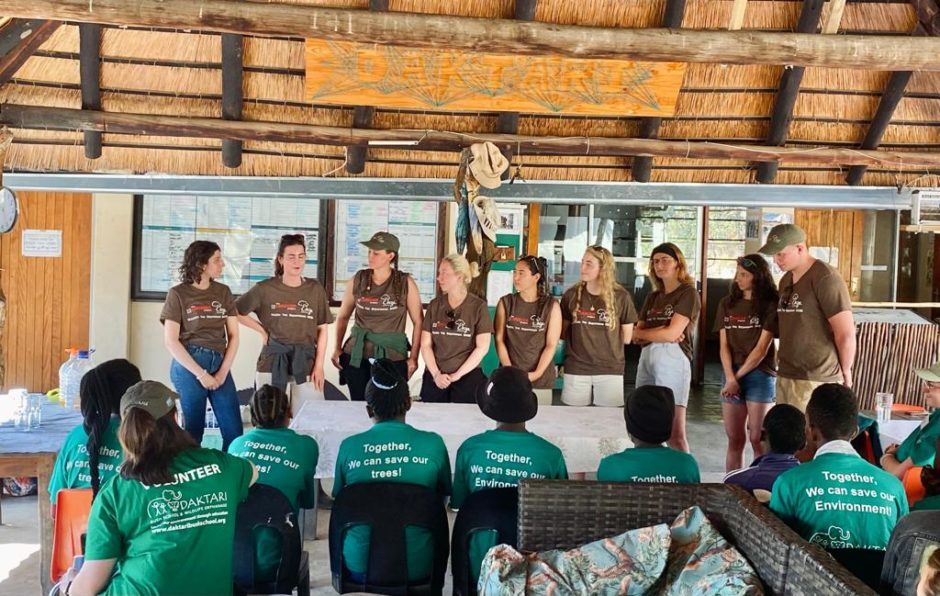
Nourish Eco Village (PM)
Tree planting at Nourish.
…more details to come.
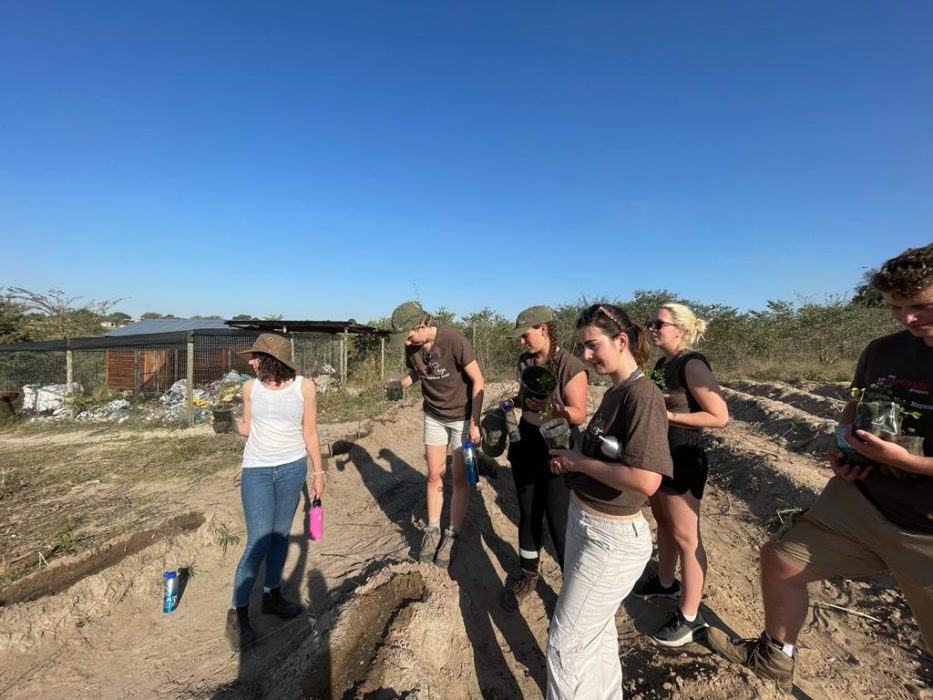
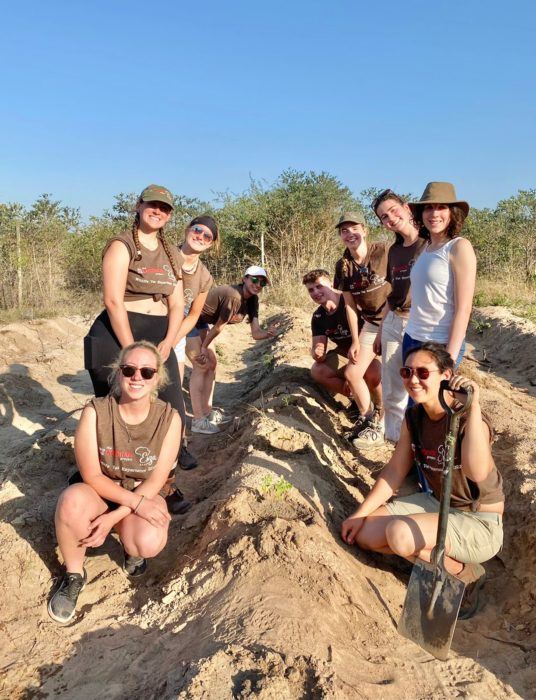
Day 13 (Friday)
Vet shadowing with Dr Rogers – Lion TB testing (AM)
…more details to come.
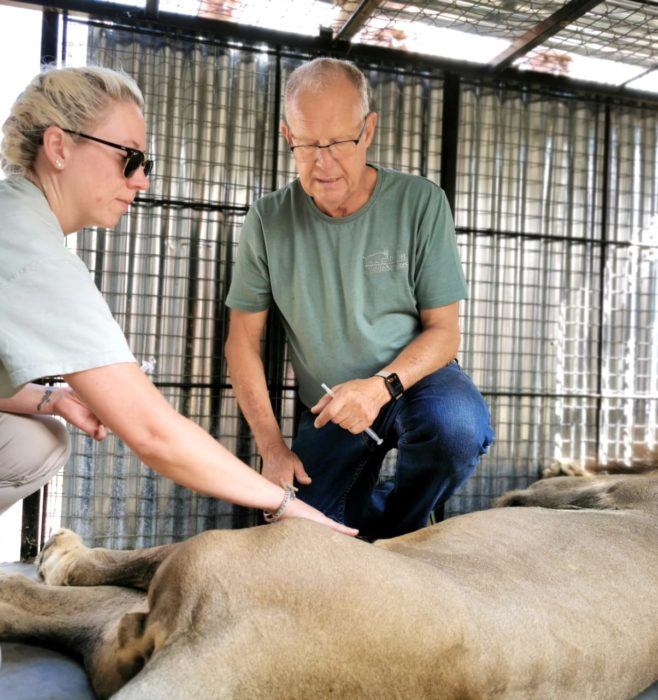
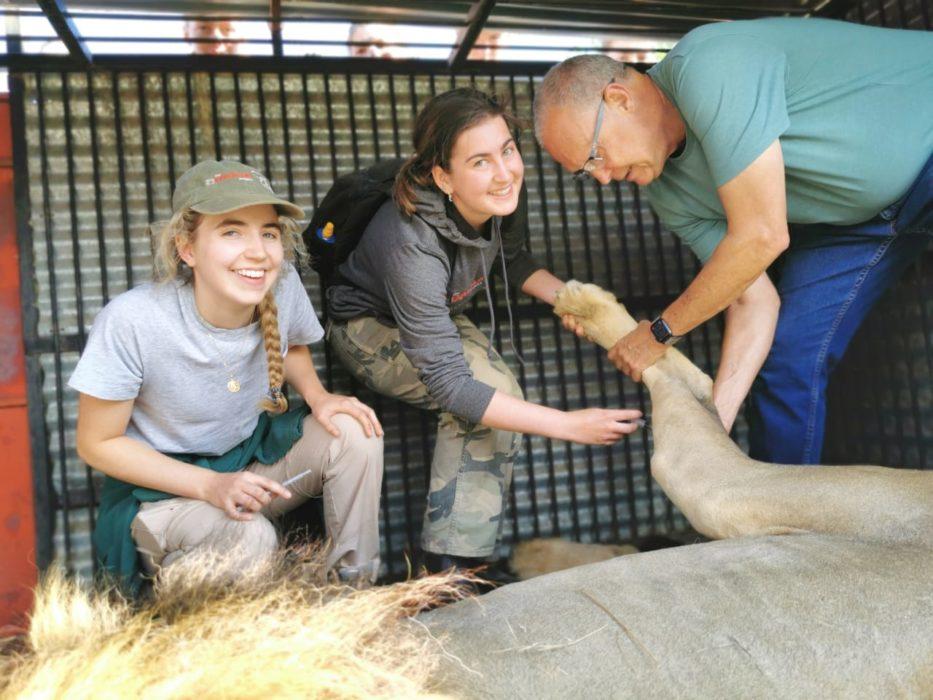
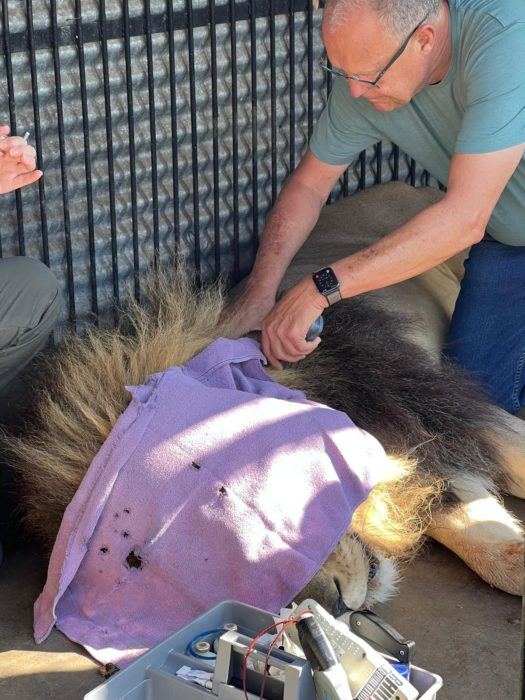
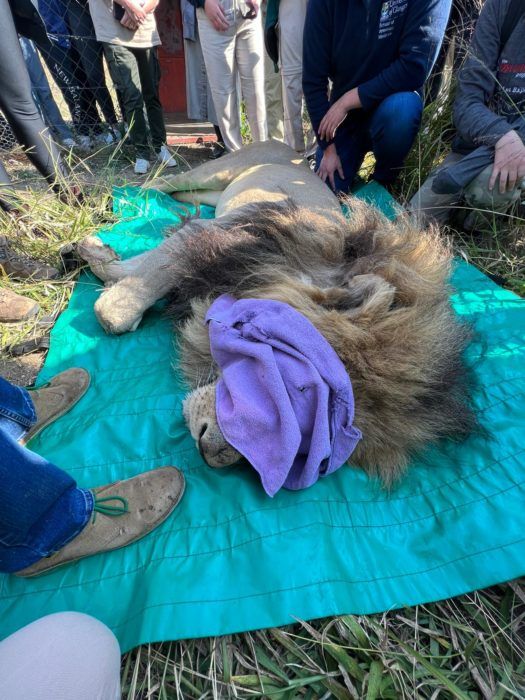
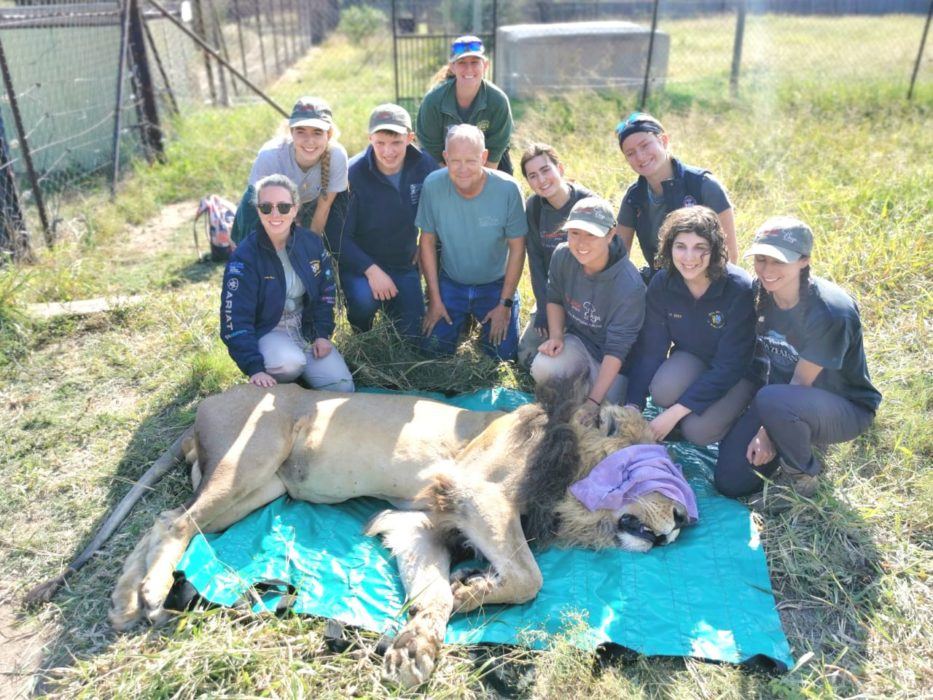
Vet shadowing with Dr Rogers – Helicopter training and darting (PM)
…more details to come.
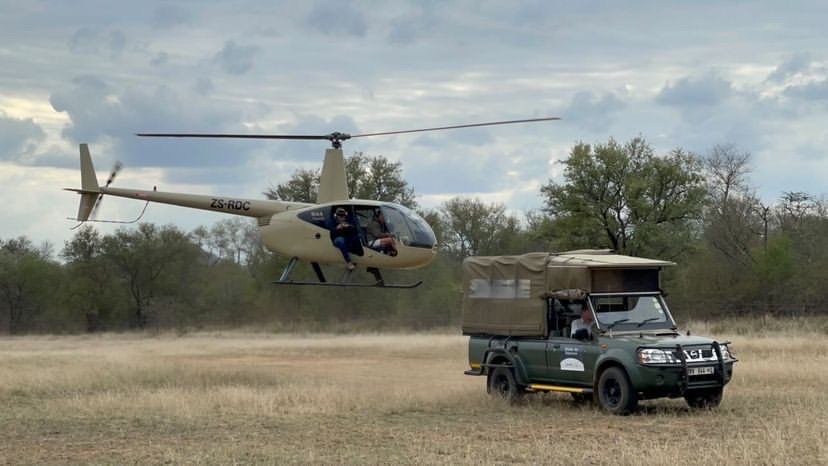
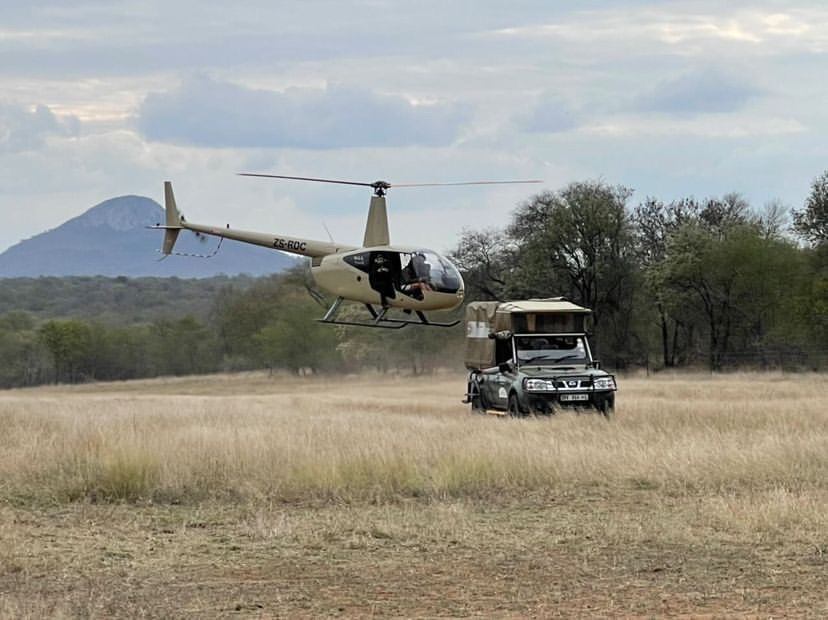
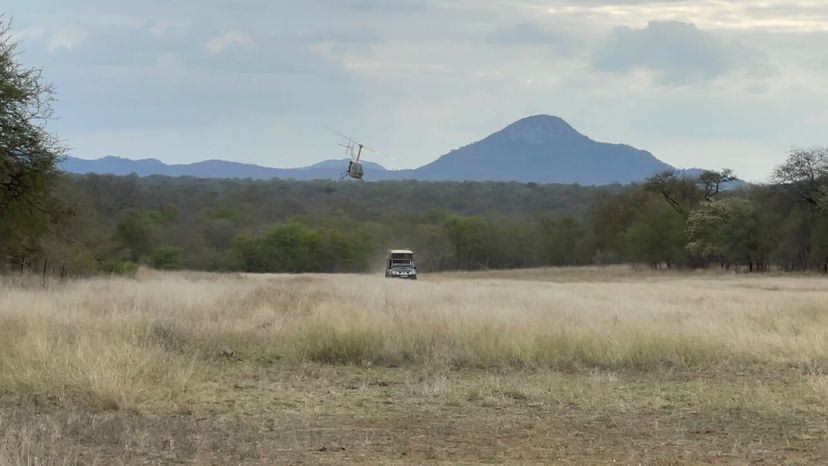
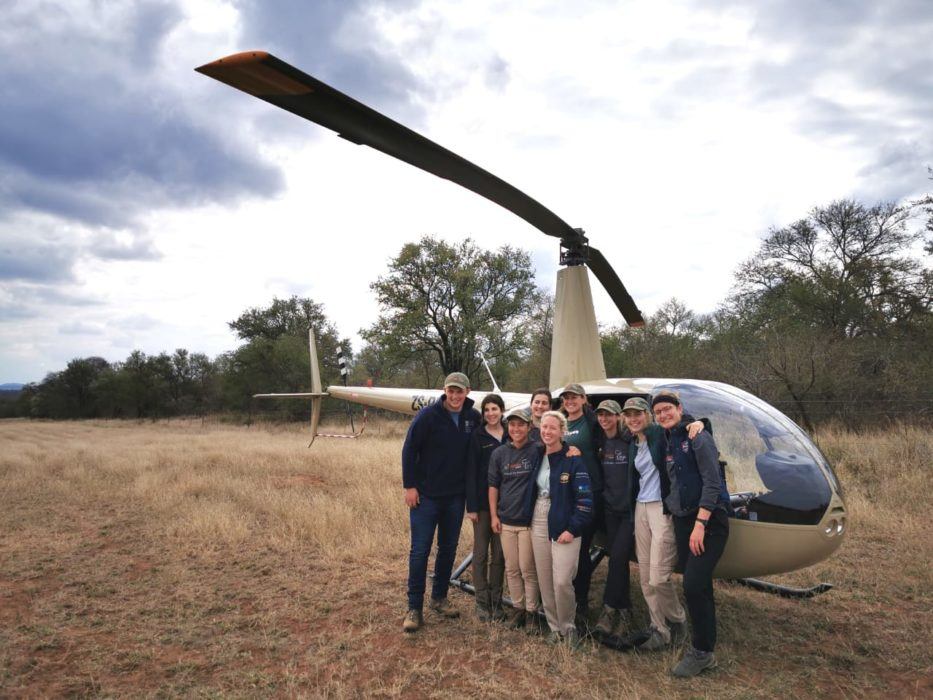
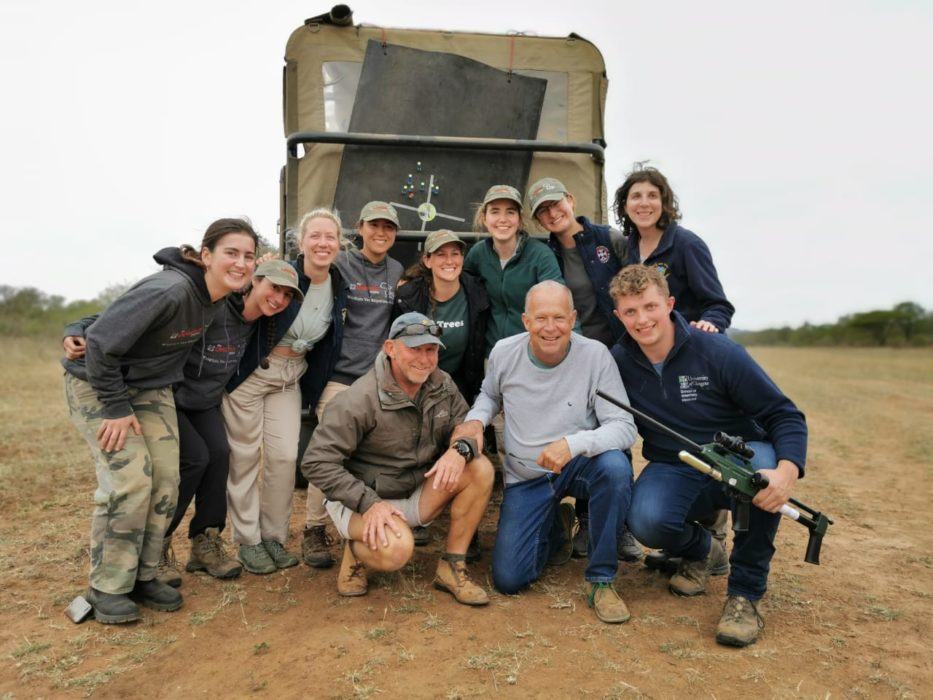
Day 14 (Saturday)
Community checkups with HALO (Hoedspruit Animal Outreach) (AM)
…more details to come.
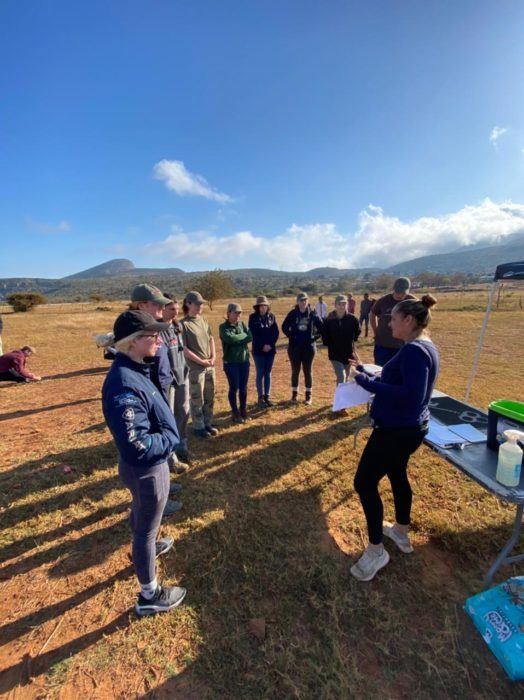
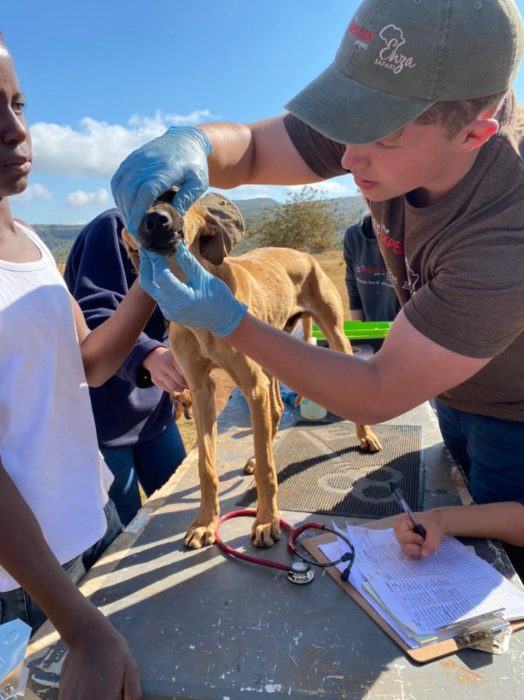
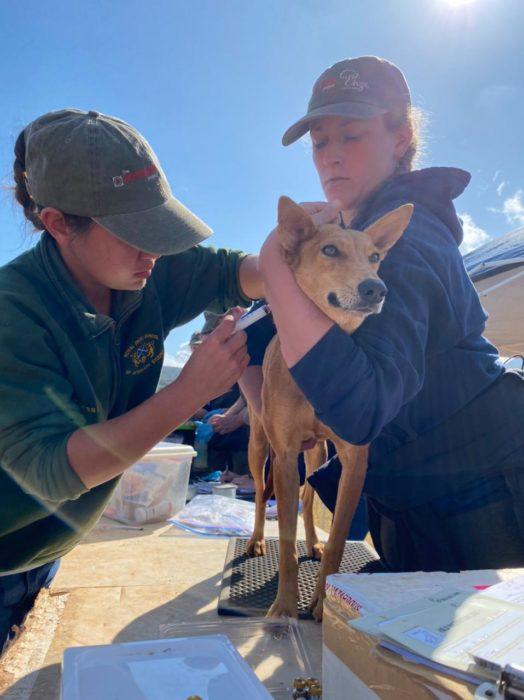
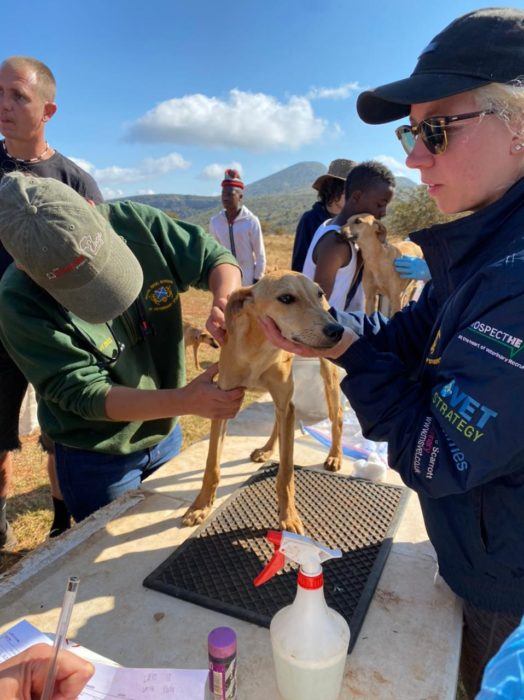
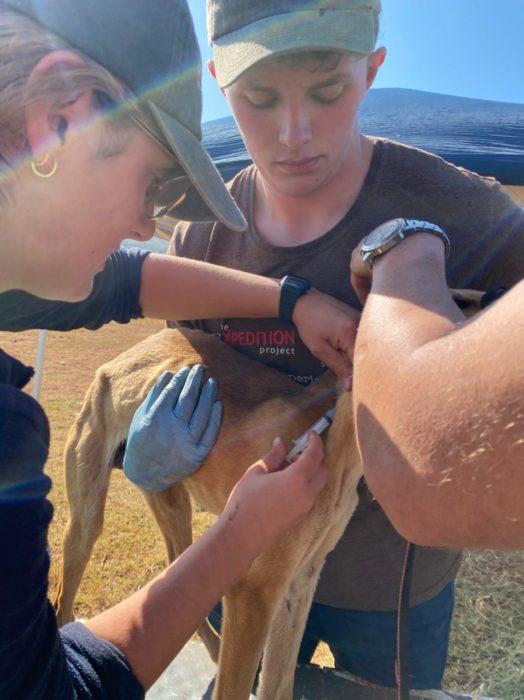
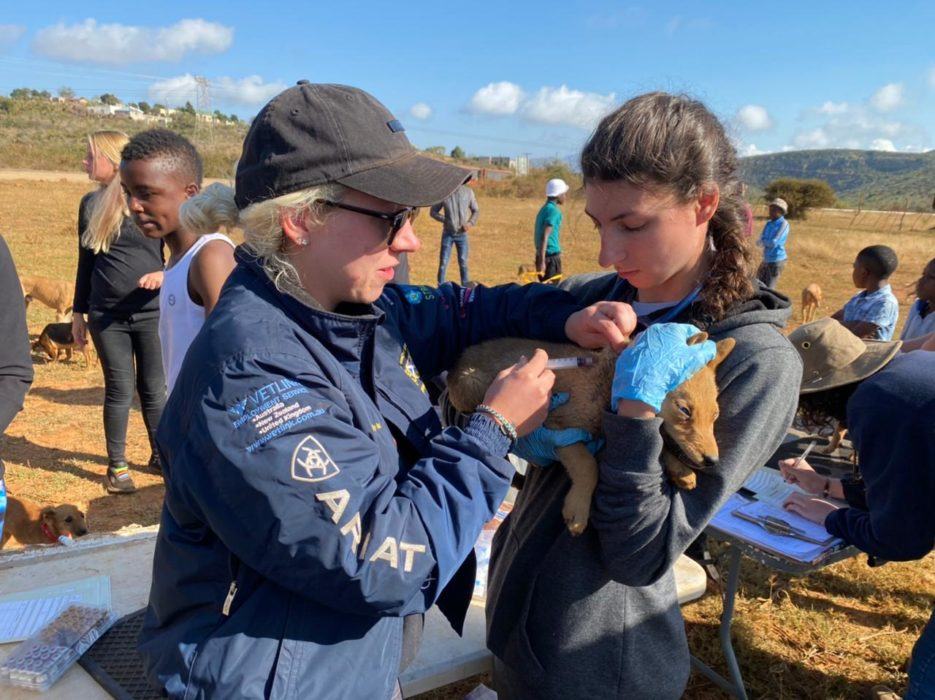
Blyde River Canyon excursion (PM)
…more details to come.
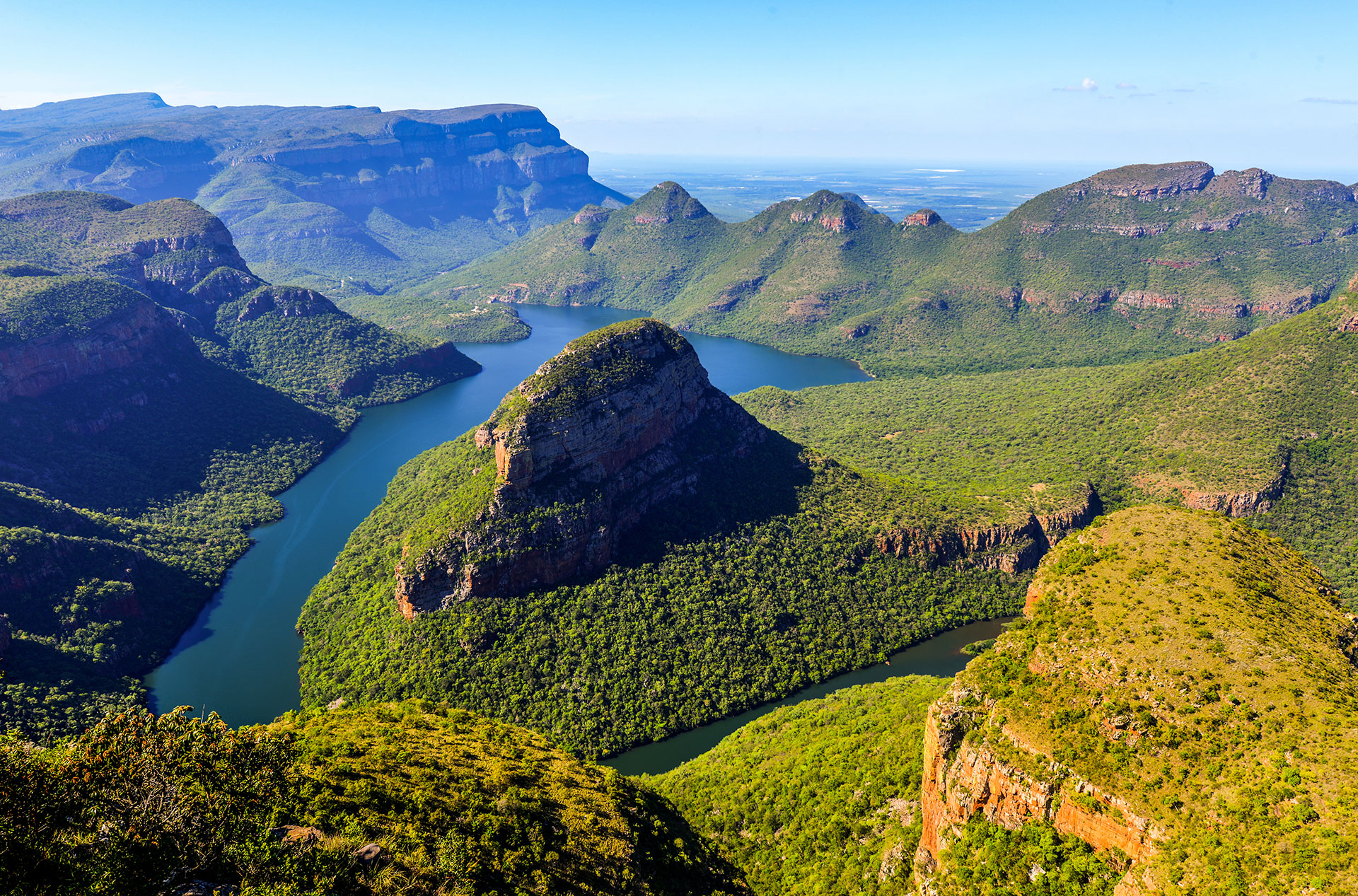

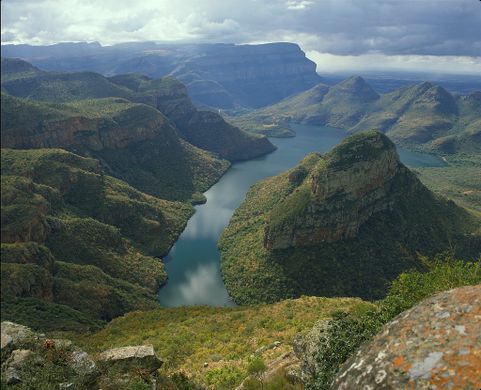
Day 15 (Sunday)
Departure day – drive to Johannesburg airport
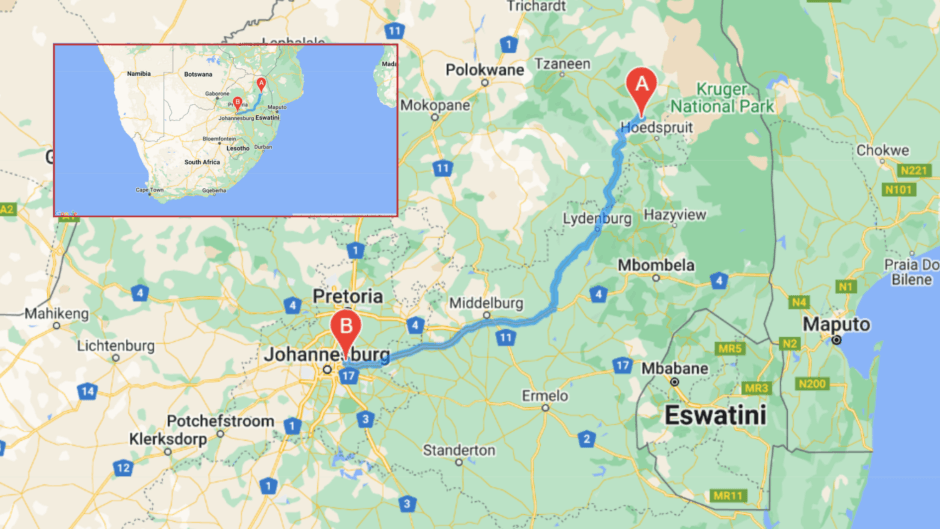
**Highlights by Emily, Beth and Josh
Support Student fundraisers | Find out more about this trip | Join Wildlife Vet Online